Closure of Marquette Trail
The Marquette Trail from the Paul H. Douglas Center to West Beach is closed March 19 through the year's end for a paving project. There will be no public access during this time. The Paul H. Douglas Trail (Miller Woods Trail) remains open.
Partial Trail Closure at Bailly / Chellberg
The portion of the Bailly / Chellberg Trail north of the farm in the ravines will be closed from June 16, 2025, until October 3, 2025. This is for the replacement of the boardwalks and stairs in the ravines.
Partial Closures of Calumet Bike Trail
Due to recent re-construction efforts, partial closures of the Calumet Bike Trail will be in effect through this fall and sometime next year. Please use caution if riding on the trail (see below) and off the trail (because of the closures).
Partial Trail Closure at Portage Lakefront and Riverwalk
Closed portion of Portage Lakefront and Riverwalk Trail along Burns Waterway due to unsafe conditions from erosional damage. This trail portion will remain closed while funding is sought for repair work. Pier access remains open on either side of closure.
| Title | Indiana Dunes |
| Park Code | indu |
| Description | Lake Michigan's might has influenced Indiana Dunes for millennia. Wind and waves have shaped the land, leaving a rich mosaic of habitats along these 15 miles of Indiana coast. Over 50 miles of trails lead through shifting sand dunes, quiet woodla... |
| Location | |
| Contact | |
| Activities |
|
| Entrance fees |
Entrance - Motorcycle
$20.00
7-Day Park Entrance Fee - Motorcycle
Per motorcycle (valid for 1-7 days from date of purchase)
Entrance - Private Vehicle
$25.00
7-Day Park Entrance Fee - Family-Size Vehicle
Per private family-sized vehicle (valid for 1-7 days from date of purchase).
Entrance - Per Person
$15.00
7-Day Per Person Entrance Fee (Organized, non-commercial groups)
Visitors 16 years of age or older who enter on foot, bicycle, boat, or as part of an organized group not involved in a commercial tour.
Commercial Entrance - Sedan
$25.00
Entry for commercial sedans with 6 or less people.
Cost is $25.00 plus $15 per person (not to exceed next highest rate).
Commercial Entrance - Van
$40.00
Commercial Tour Fee - Van (7-15 persons) - $40.00
Entry for commercial vans with 7-15 people.
Commercial Entrance - Mini-bus
$40.00
Commercial Tour Fee - Mini Bus (16-25 persons) - $40.00
Entry for commercial mini bus with 16-25 people.
Commercial Entrance - Motor Coach
$100.00
Commercial Tour Fee - Motor Coach (26+ persons) - $100.00
Entry for commercial motor coaches with 26+ persons.
|
| Campgrounds | Count: 3
Central Avenue Walk-in Sites
Dunbar Group Site
Dunewood Campground
|
| Places | Count: 36
Bailly CemeteryWith the earliest burial in 1827, the Joseph Bailly Cemetery is the oldest Euro-American cemetery in Porter County, Indiana. Reflecting its appearance from 1914, the cemetery is part of the Bailly Homestead National Historic Landmark, designated in 1962. 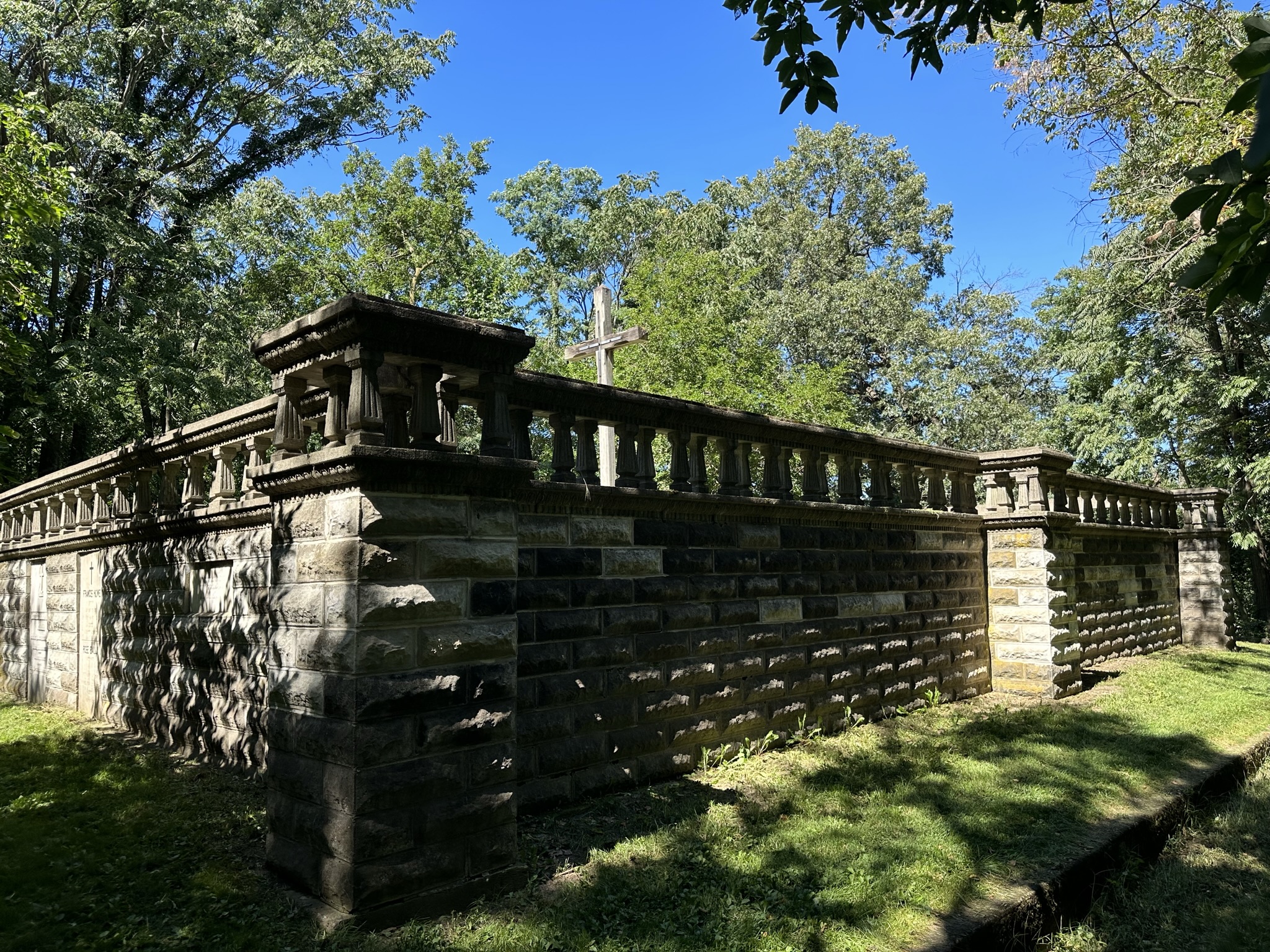
Bailly HomesteadExplore the Homestead of the independent fur-trader Joseph Bailly. View an unusual combination of vernacular architecture, late 19th century detail, rustic log and brick structures, and the unusual family cemetery. 
Bailly Homestead, Chellberg Farm, Little Calumet River, Mnoké Prairie TrailsThe Little Calumet River, Mnoké Prairie, Bailly Homestead, Chellberg Farm and Bailly Cemetery trail system reveals the rich natural diversity that has drawn people to this area for over 10,000 years. Hike through a forest dominated by maple, beech, basswood and oak trees. Follow a stretch of the Little Calumet River, once a critical transportation route for early regional travelers and explore the recently restored Mnoké Prairie. 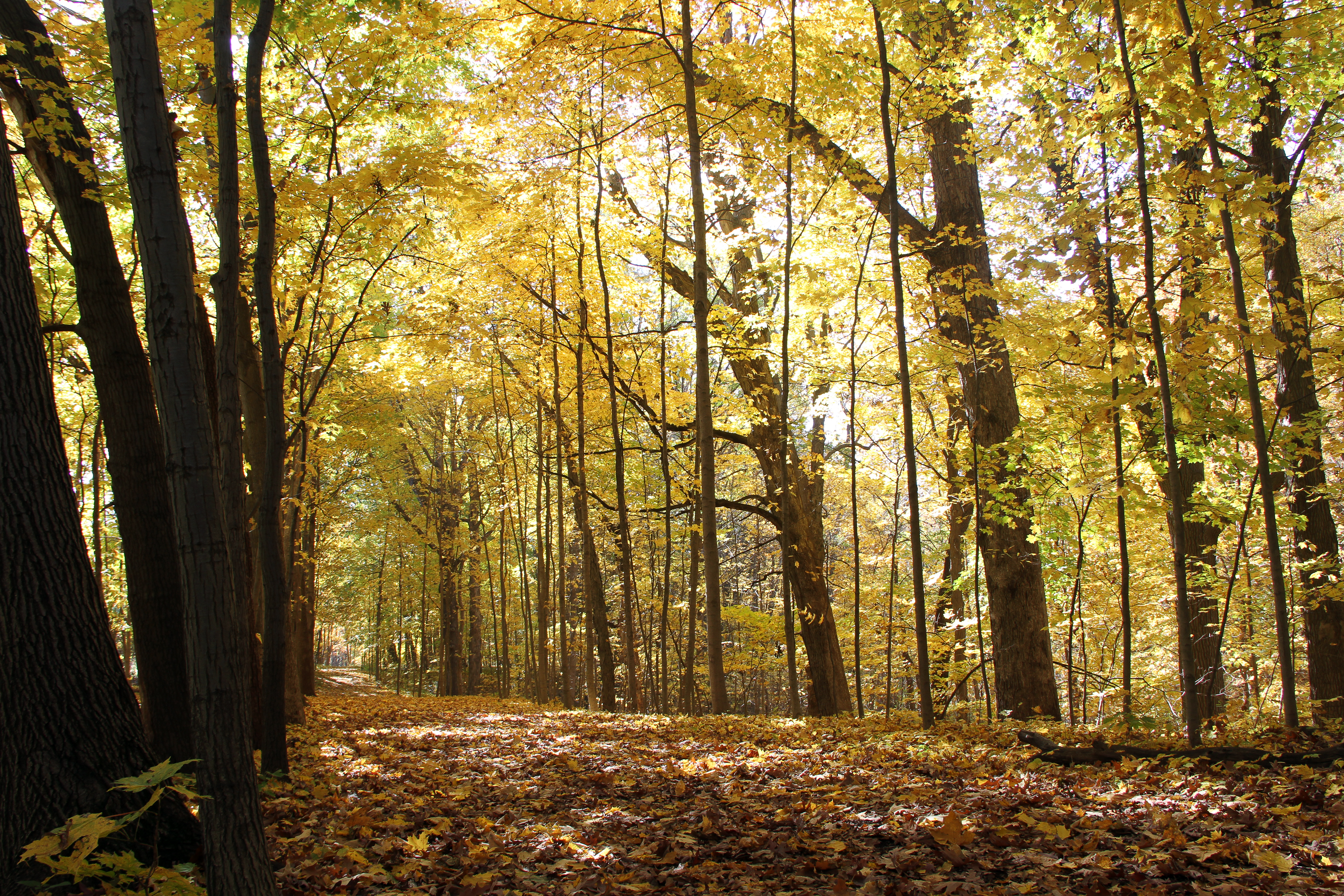
Calumet Dunes TrailBuilt as a Church in 1959, the last service in the building was held on August 30, 1970 and the National Park Service purchased the land and building shortly afterwards. The building became the park's headquarters and visitor center in 1971. The headquarters moved out of the building to the abandoned Nike missile base in 1977. The visitor center stayed in the building until 2006, when the current Visitor Center on State Road 49 was opened. 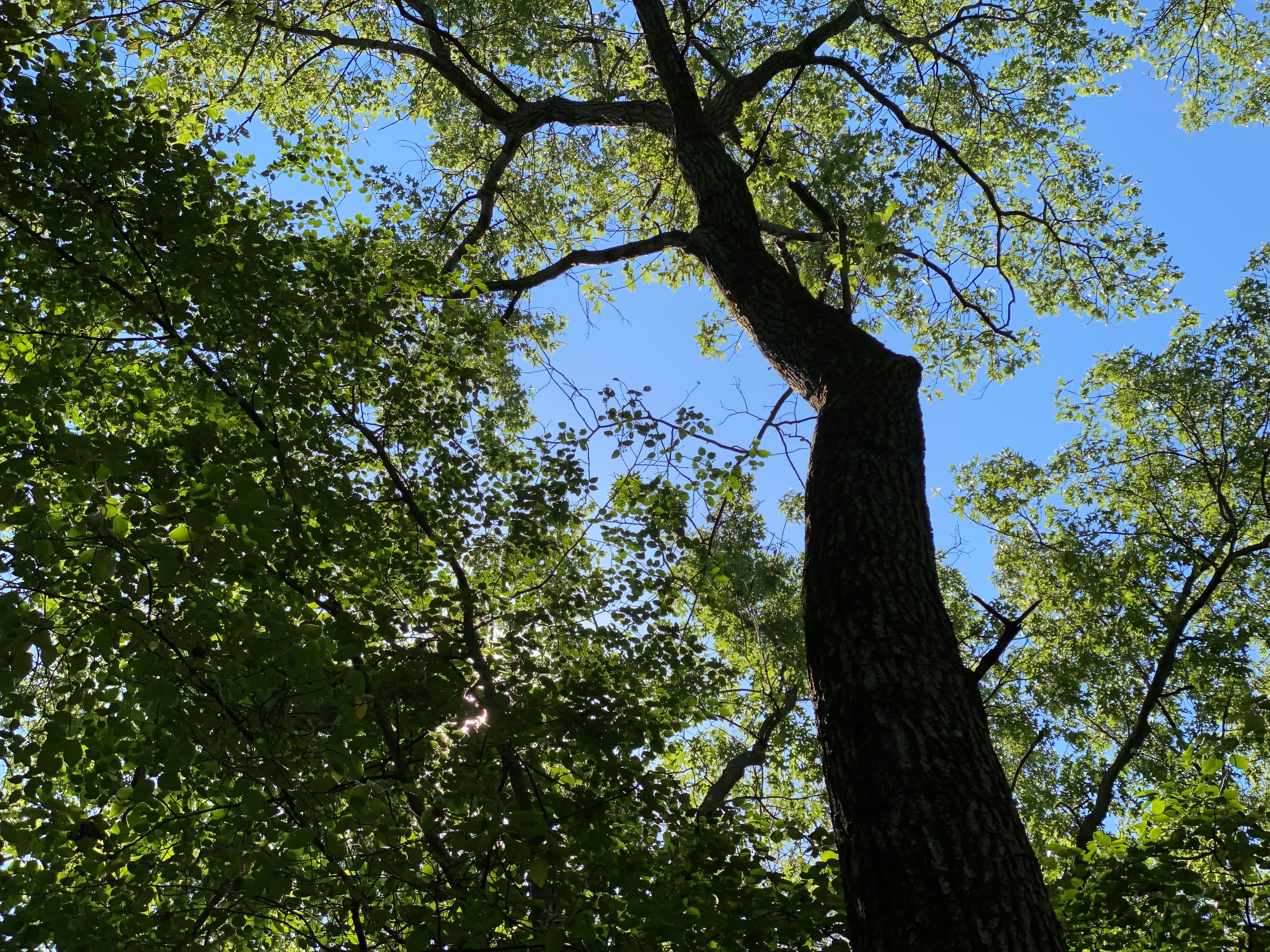
Central Avenue BeachCentral Avenue Beach features towering sand dunes backed up against the shoreline. Parking is located just a couple blocks from the beach. The beachfront here is an excellent place to walk along the shoreline and take in the impressive dune formations. 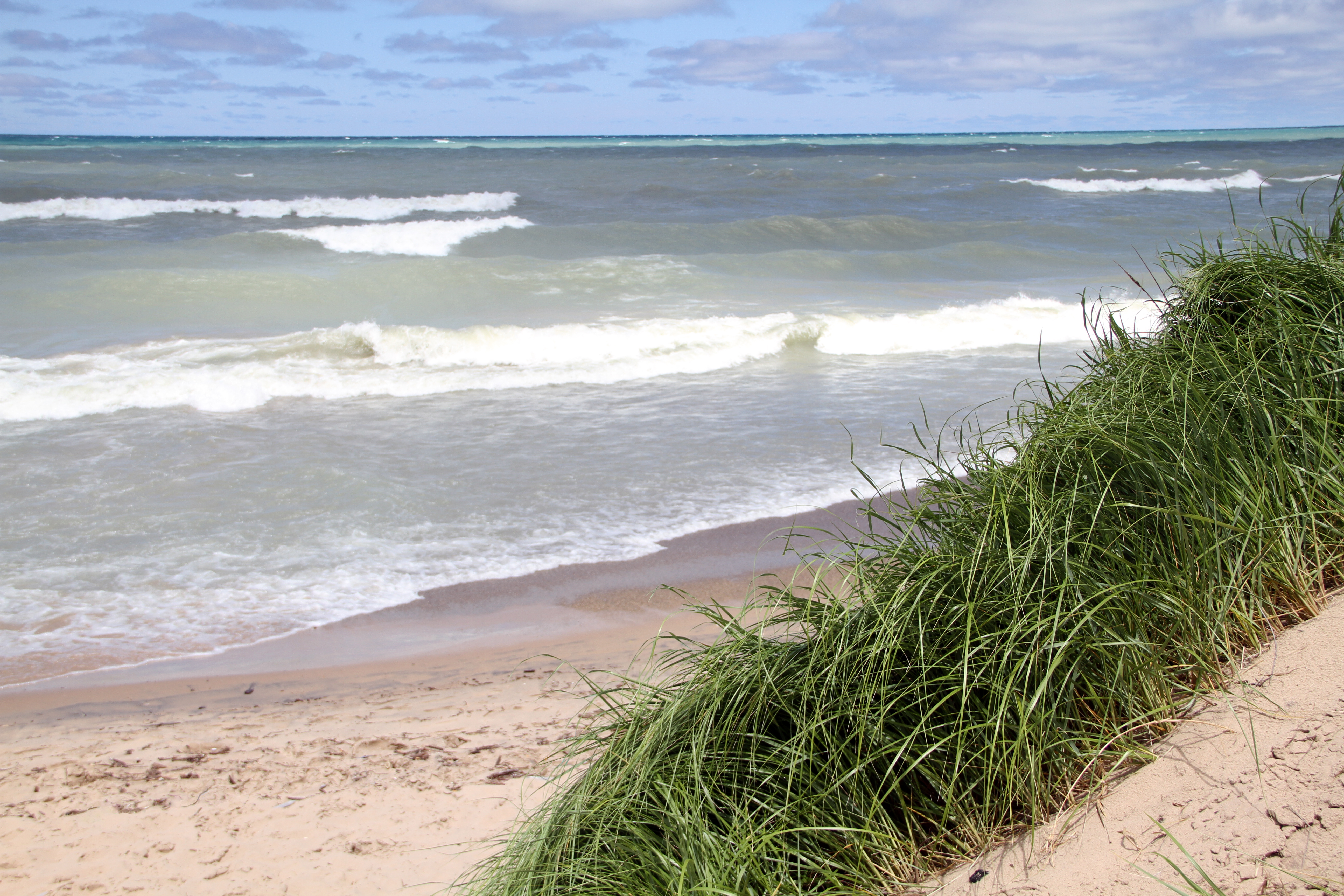
Century of Progress DistrictOver 85 years of wind, sand, and surf have battered the five World's Fair houses located along Lake Front Drive in Beverly Shores, but their uniqueness has weathered the elements. With the theme of a Century of Progress, the houses were built for the 1933 Chicago World's Fair to demonstrate modern architectural design, experimental materials, and new technologies such as central air conditioning and dishwashers. 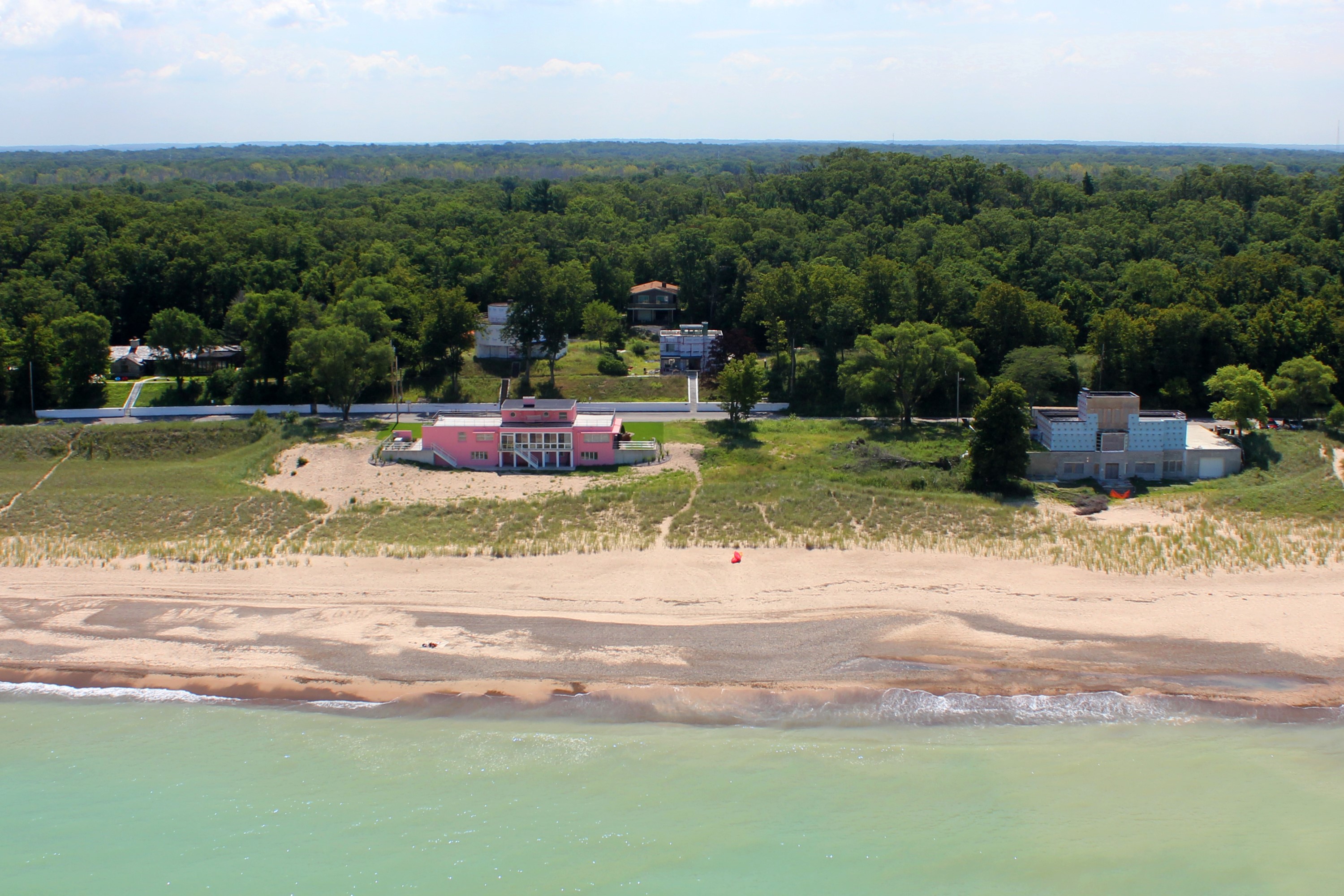
Charles and Mathilda Nelson HouseThe Nelson-Reed property in Porter County, Indiana, is a historical site rooted in the Swedish immigrant farming community and Indiana Dunes preservation. Established by Swedish immigrants Charles and Mathilda Nelson, the farm became a hub of local history, with their son Bill co-founding the Duneland Historical Society. In 1952, Chicago architect Earl Reed Jr. purchased the property, championing conservation efforts, including the creation of Indiana Dunes National Lakeshore 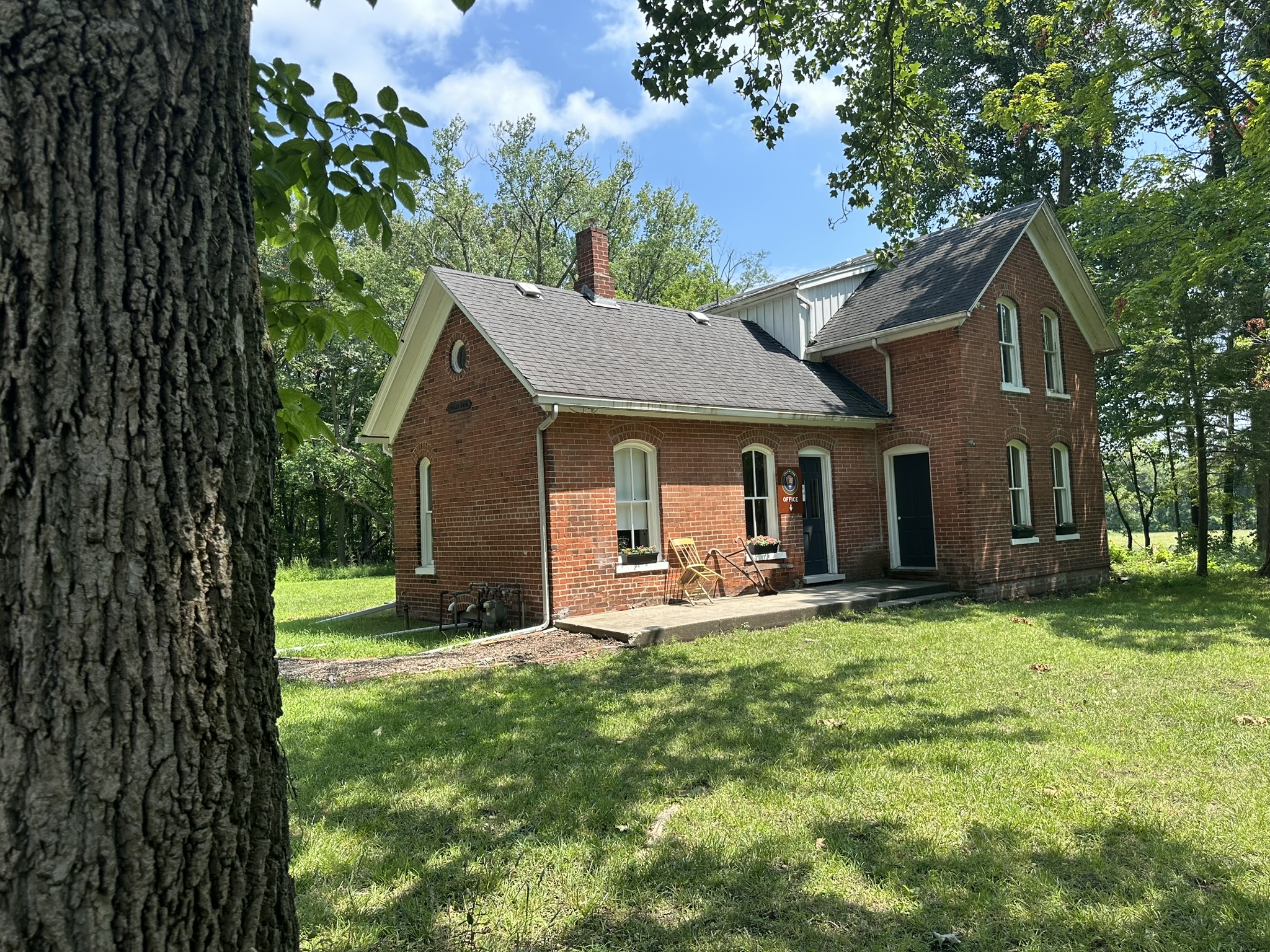
Chellberg FarmDuring the early 20th century, a hardworking Swedish immigrant family, lived and worked here for three generations. The Chellberg's gave other immigrants a place to stay and helped them find work. 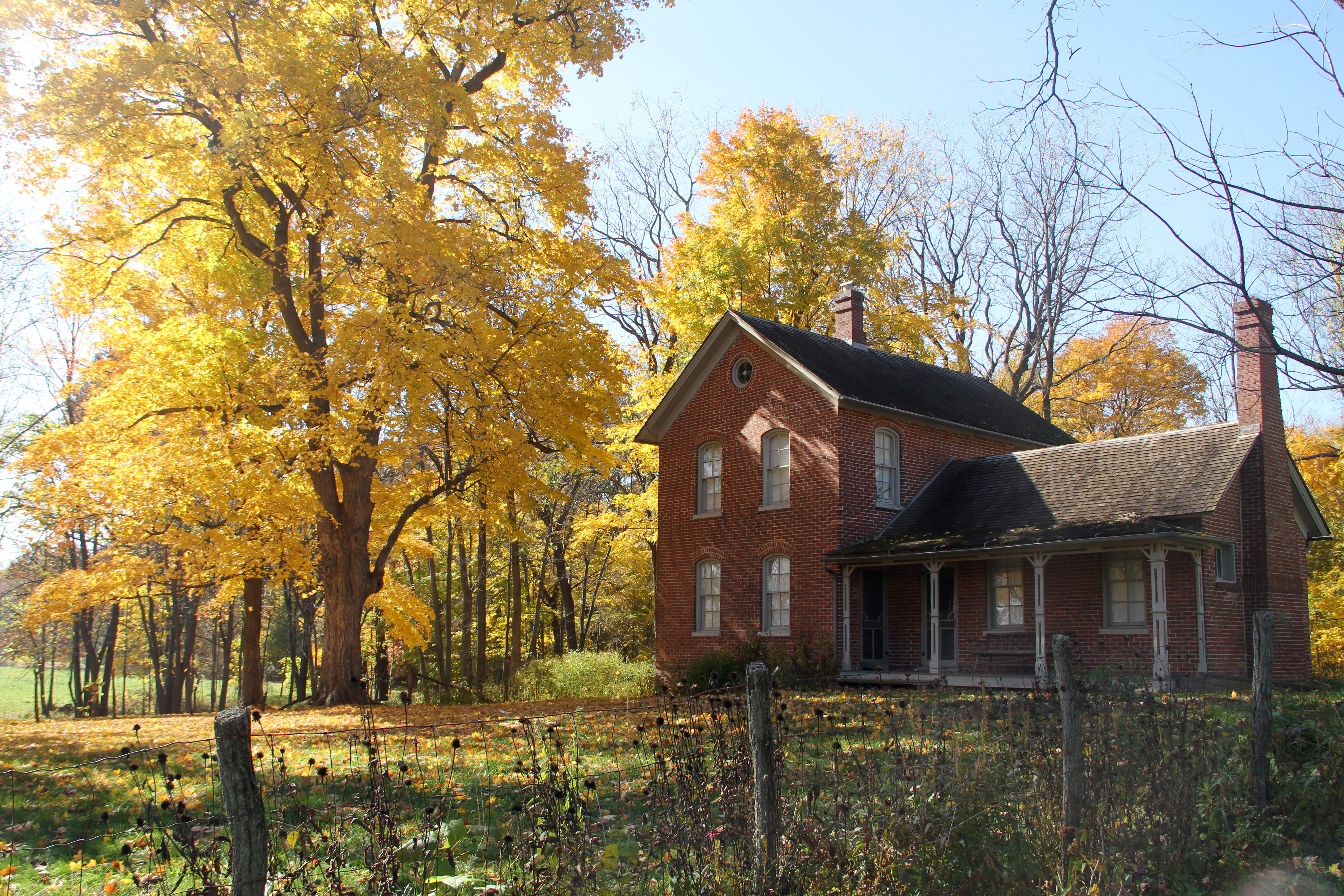
Cowles Bog Trail (North)The Cowles Bog Trail highlights an area of such outstanding plant diversity that it was designated as a National Natural Landmark in 1965. This location, where Dr. Henry Cowles conducted much of his early work in plant ecology and succession in the early 1900s, remains an important focus for scientific study today. Explore several distinct habitats along this 4.7-mile trail including ponds, marshes, swamps, black oak savannas and beaches. 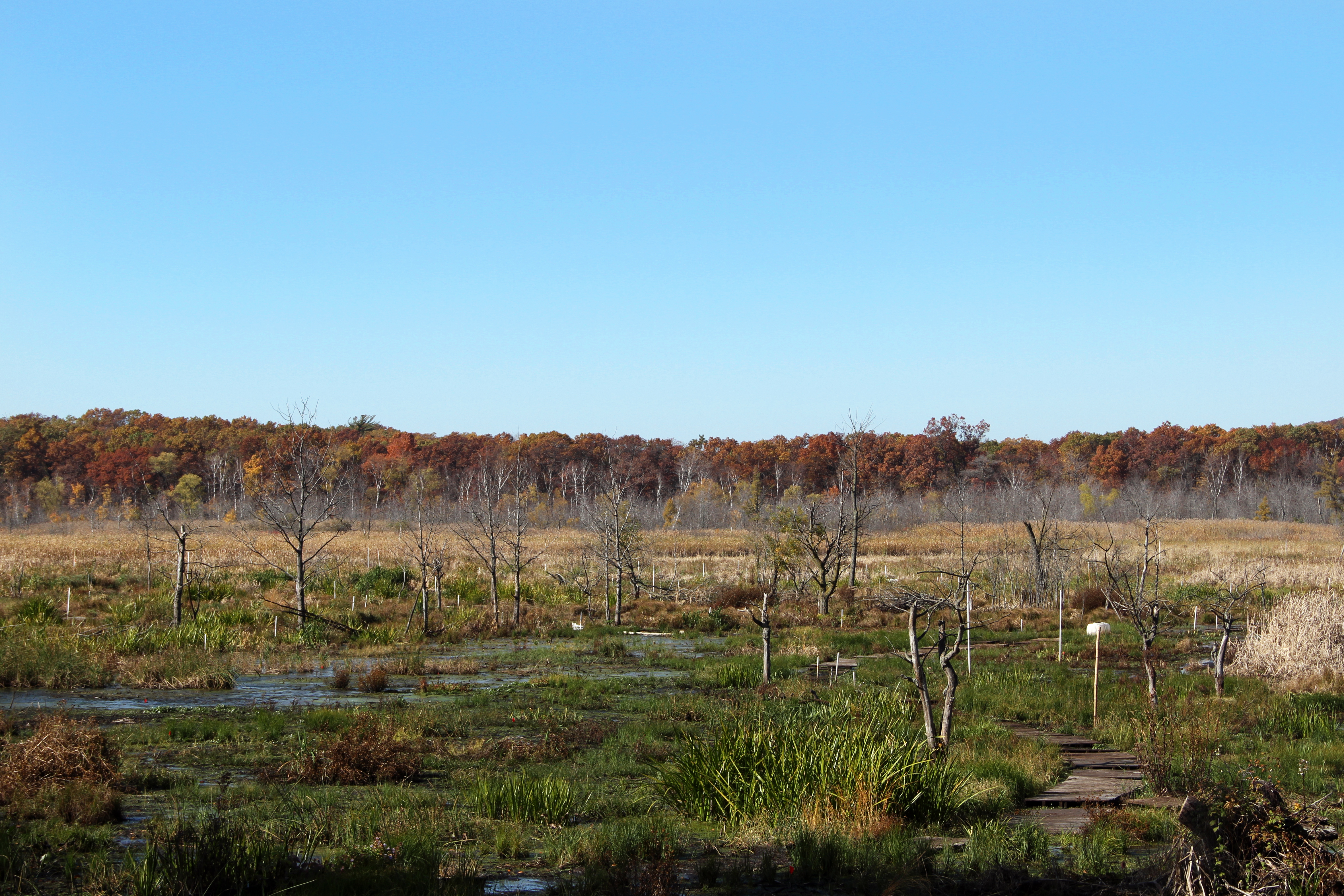
Cowles Bog Trail (South)The Cowles Bog Trail highlights an area of such outstanding plant diversity that it was designated as a National Natural Landmark in 1965. This location, where Dr. Henry Cowles conducted much of his early work in plant ecology and succession in the early 1900s, remains an important focus for scientific study today. Explore several distinct habitats along this 4.7-mile trail including ponds, marshes, swamps, black oak savannas and beaches. 
Dunbar BeachDunbar Beach is a popular destination to go swimming, walking the shoreline, or sit and sunbathe. A paved parking lot and facilities are located one block away from the shoreline. 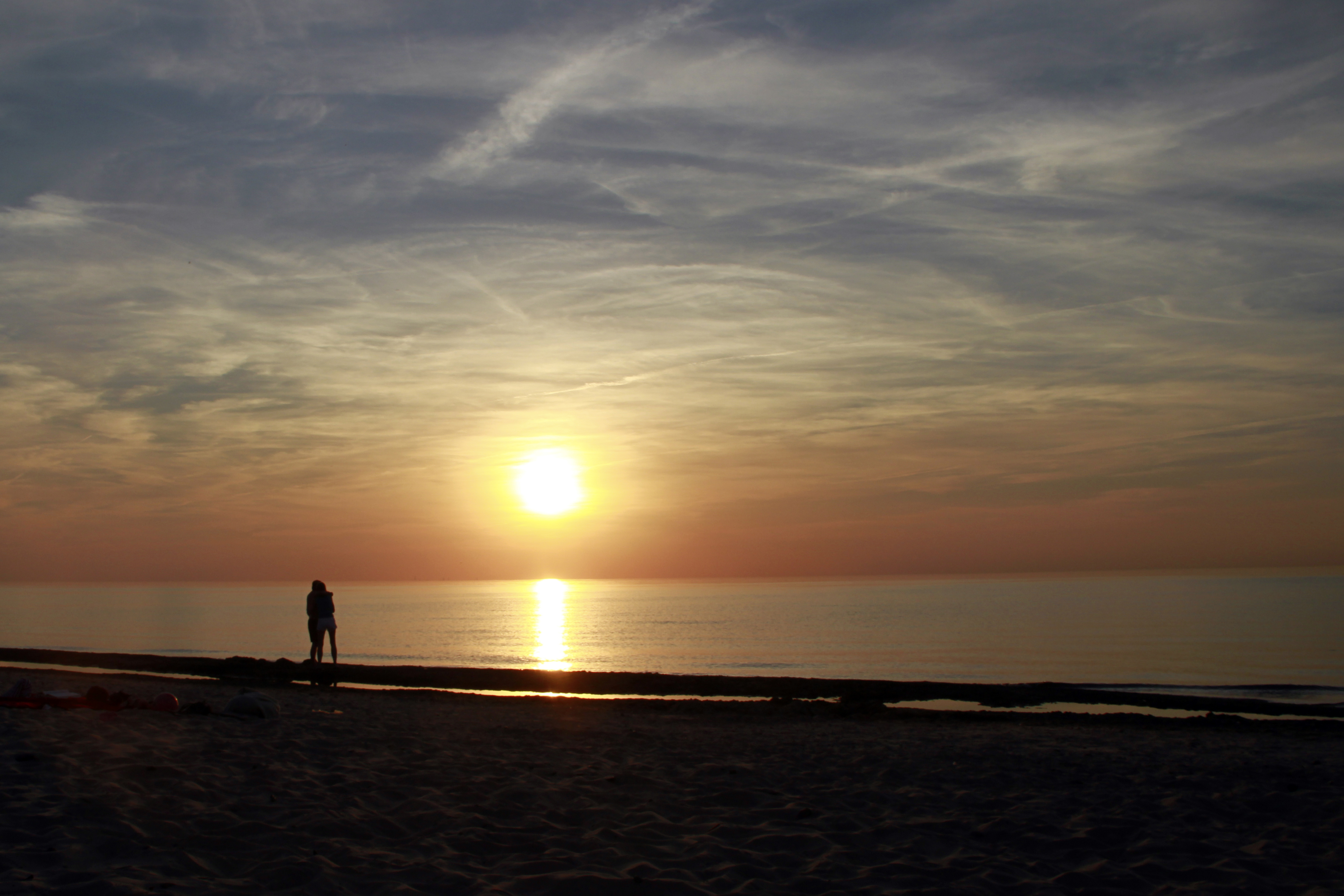
Dune Ridge TrailThe Dune Ridge Trail offers great views of the extensive wetlands and forests south of this tall, forested dune. The different habitats you'll see along the trail help make Indiana Dunes National Park one of the top most biologically diverse of all the national parks. 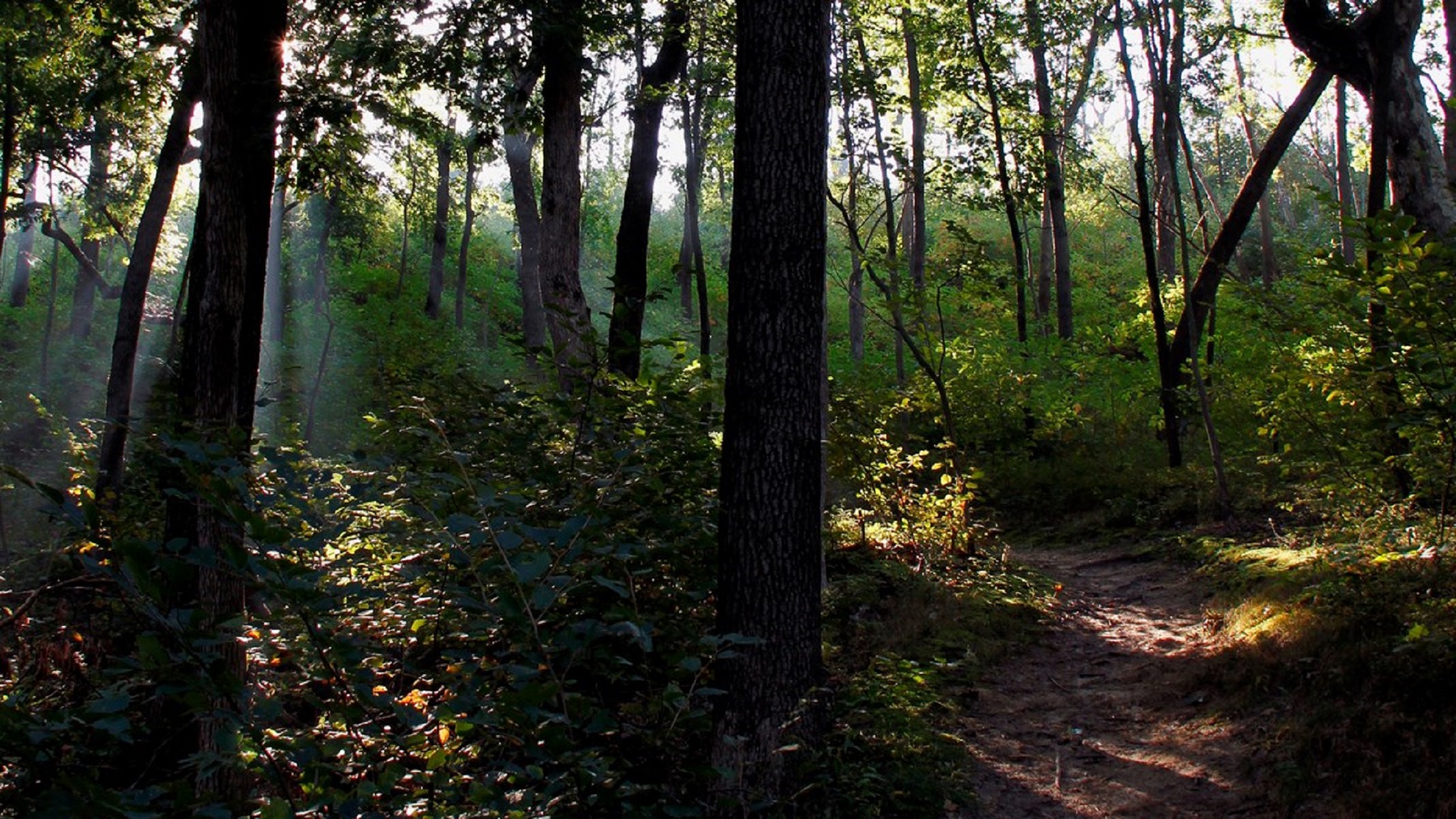
Glenwood Dunes Trail (Alternate)This extensive trail system features interconnected loops ranging from less than a mile to nearly 15 miles and is popular with hikers, runners, horseback riders and cross-country skiers. 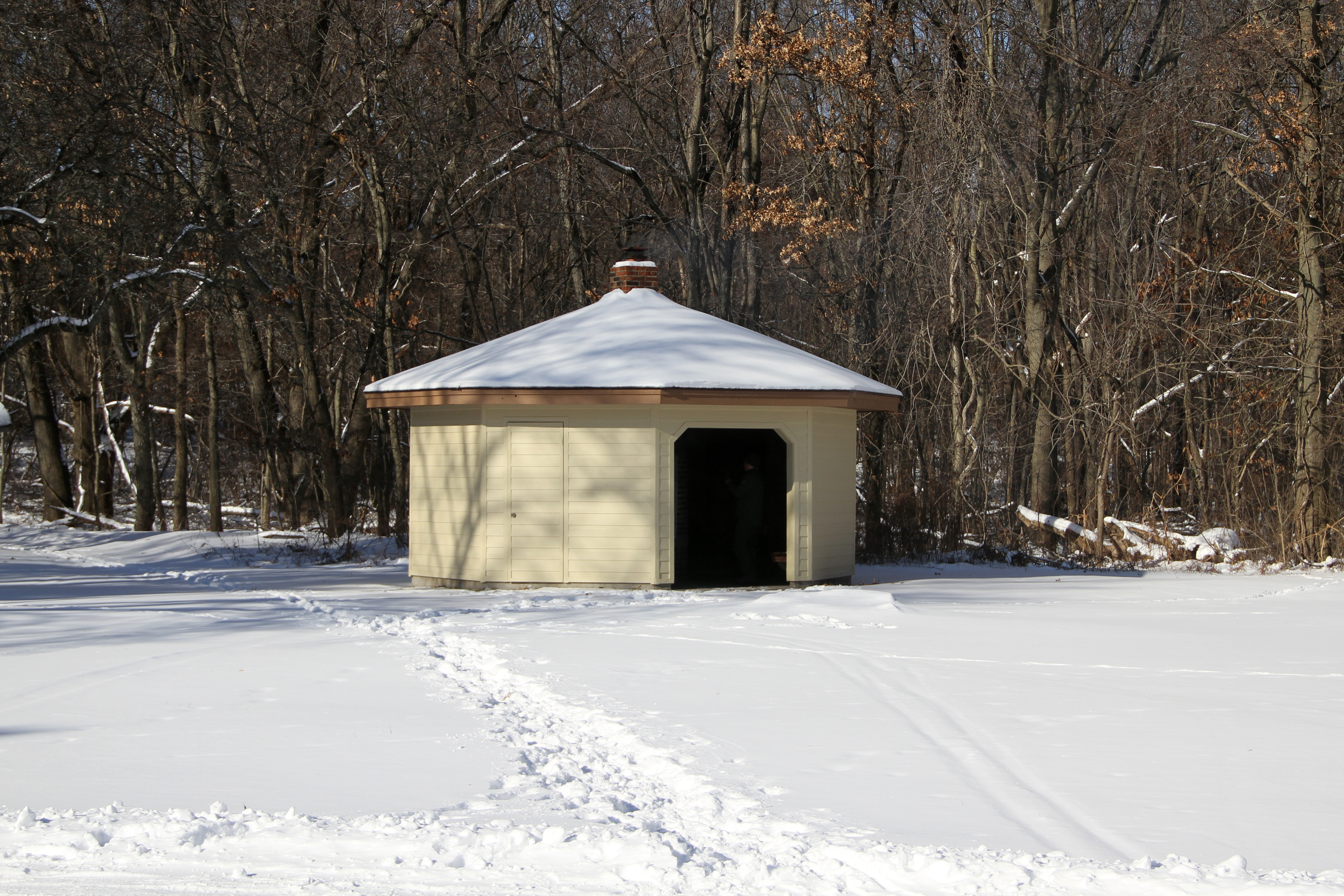
Glenwood Dunes Trail (Main)This extensive trail system features interconnected loops ranging from less than a mile to nearly 15 miles and is popular with hikers, runners, horseback riders and cross-country skiers. 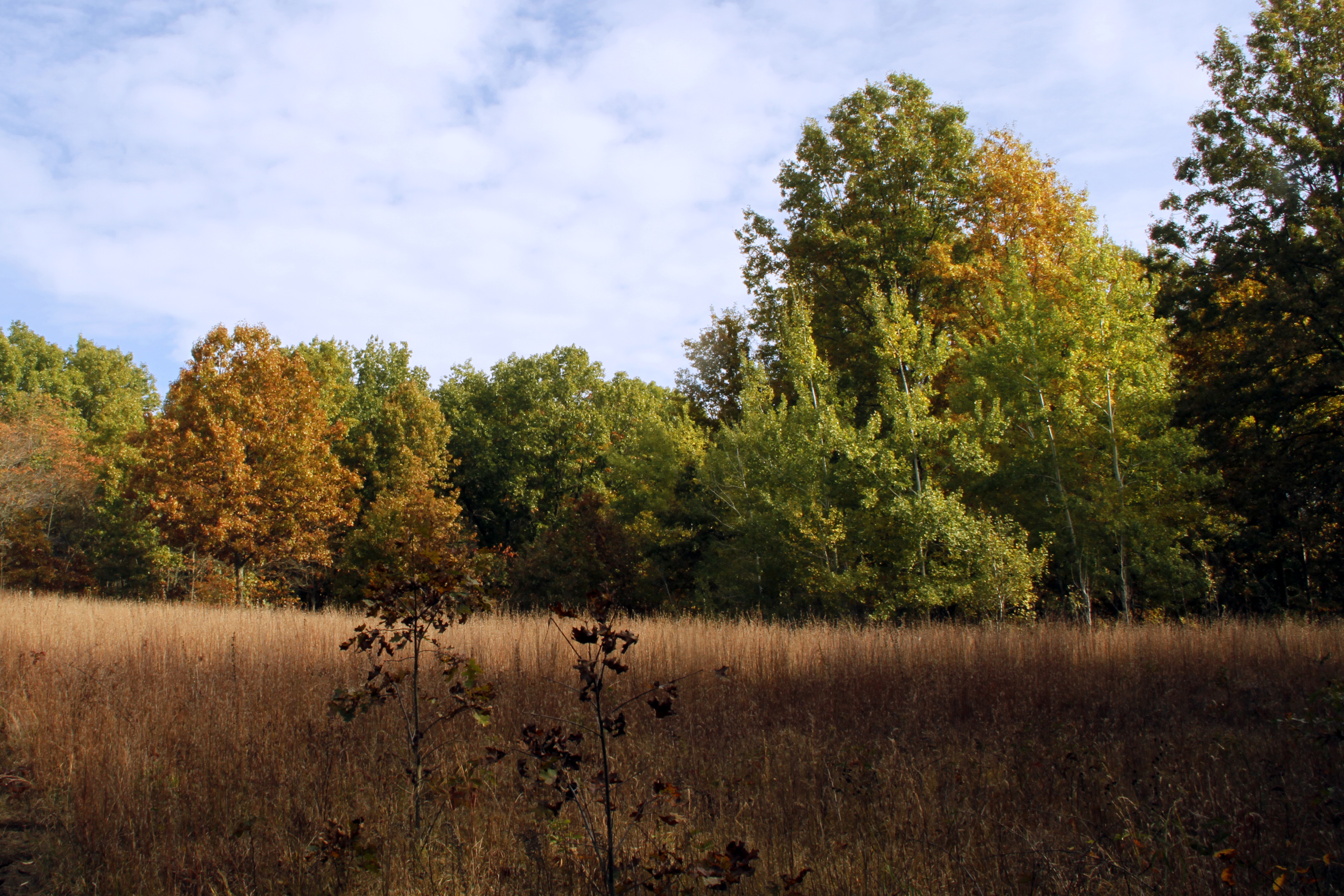
Great Marsh Trail (North)The Great Marsh is the largest interdunal wetland in the Lake Michigan watershed. It serves as a critical habitat for breeding and migratory birds. This popular trail features an overlook of the marsh where you can spot a wide variety of birds ranging from Great Blue Herons to Sandhill Cranes. While much of the marsh was drained in the early 1900's for residential and agricultural use, the National Park Service began restoration of this portion in 1998. 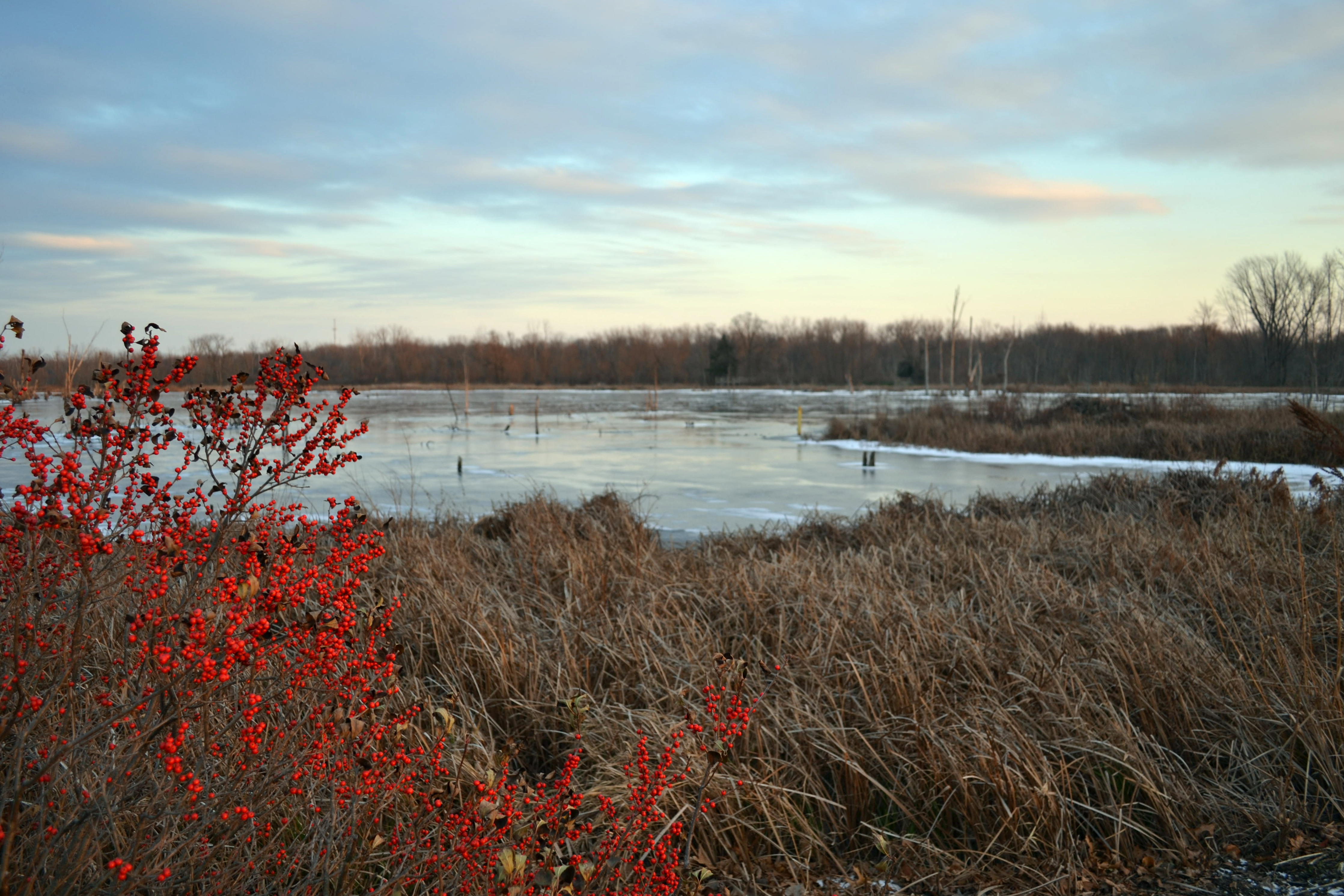
Great Marsh Trail (South)The Great Marsh is the largest interdunal wetland in the Lake Michigan watershed. It serves as a critical habitat for breeding and migratory birds. This popular trail features an overlook of the marsh where you can spot a wide variety of birds ranging from Great Blue Herons to Sandhill Cranes. While much of the marsh was drained in the early 1900's for residential and agricultural use, the National Park Service began restoration of this portion in 1998. 
Heron Rookery (East)The Heron Rookery Trail follows along a portion of the Little Calumet River that once featured over 100 Great Blue Heron nests. After 60 years of nesting here, the herons have moved on to new nesting grounds. These woods remain alive with dozens of birds including kingfishers, woodpeckers and a wide variety of migrating and nesting warblers. 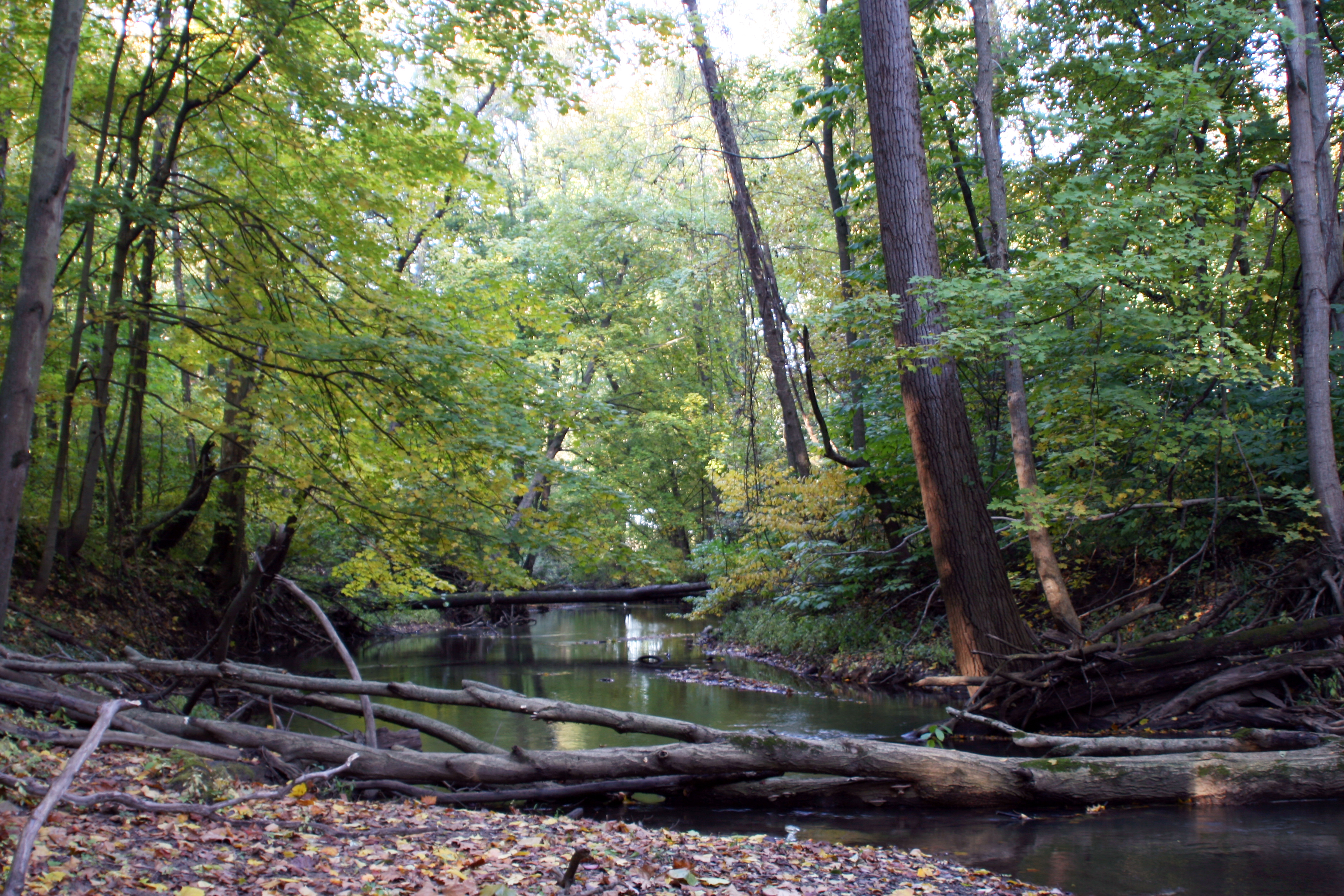
Heron Rookery (West)The Heron Rookery Trail follows along a portion of the Little Calumet River that once featured over 100 Great Blue Heron nests. After 60 years of nesting here, the herons have moved on to new nesting grounds. These woods remain alive with dozens of birds including kingfishers, woodpeckers and a wide variety of migrating and nesting warblers. 
Hobart Prairie Grove Trail (East)Hobart Prairie Grove consists of forested ravines and a portion of scenic Lake George, which is part of the Deep River. The Hobart Woodland trail offers views of forest ravines and has an overlook of Lake George. The Oak Savannah rail trail runs through the Hobart Prairie Grove and is a great place for biking, pushing a stroller or just hiking to relax and improve your health. 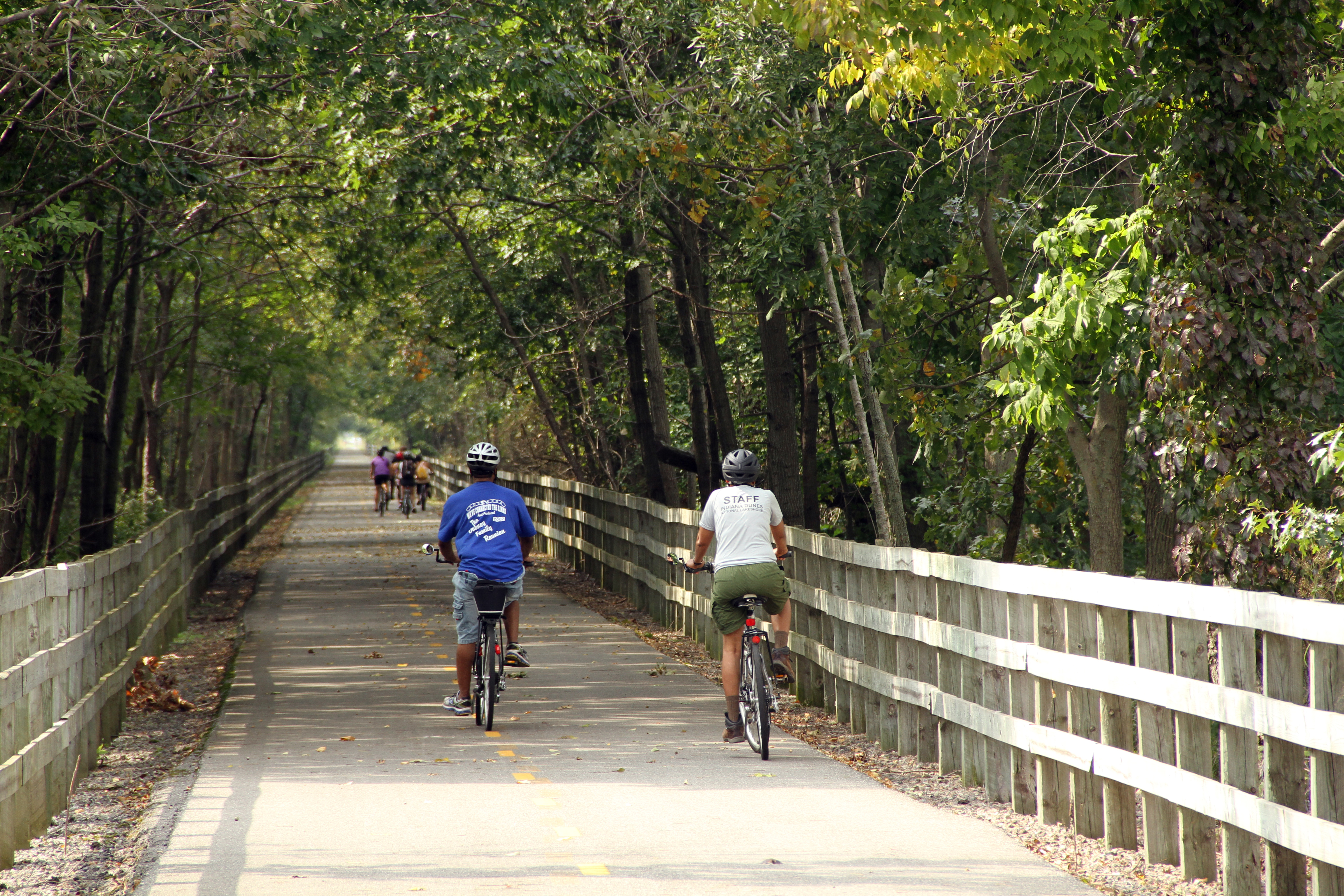
Hobart Prairie Grove Trail (West)Hobart Prairie Grove consists of forested ravines and a portion of scenic Lake George, which is part of the Deep River. The Hobart Woodland trail offers views of forest ravines and has an overlook of Lake George. The Oak Savannah rail trail runs through the Hobart Prairie Grove and is a great place for biking, pushing a stroller or just hiking to relax and improve your health. 
Kemil BeachKemil Beach is an excellent destination to swim, soak up the sun, or watch the stars at night. Facilities and a paved parking lot are located just a block away from the shoreline. 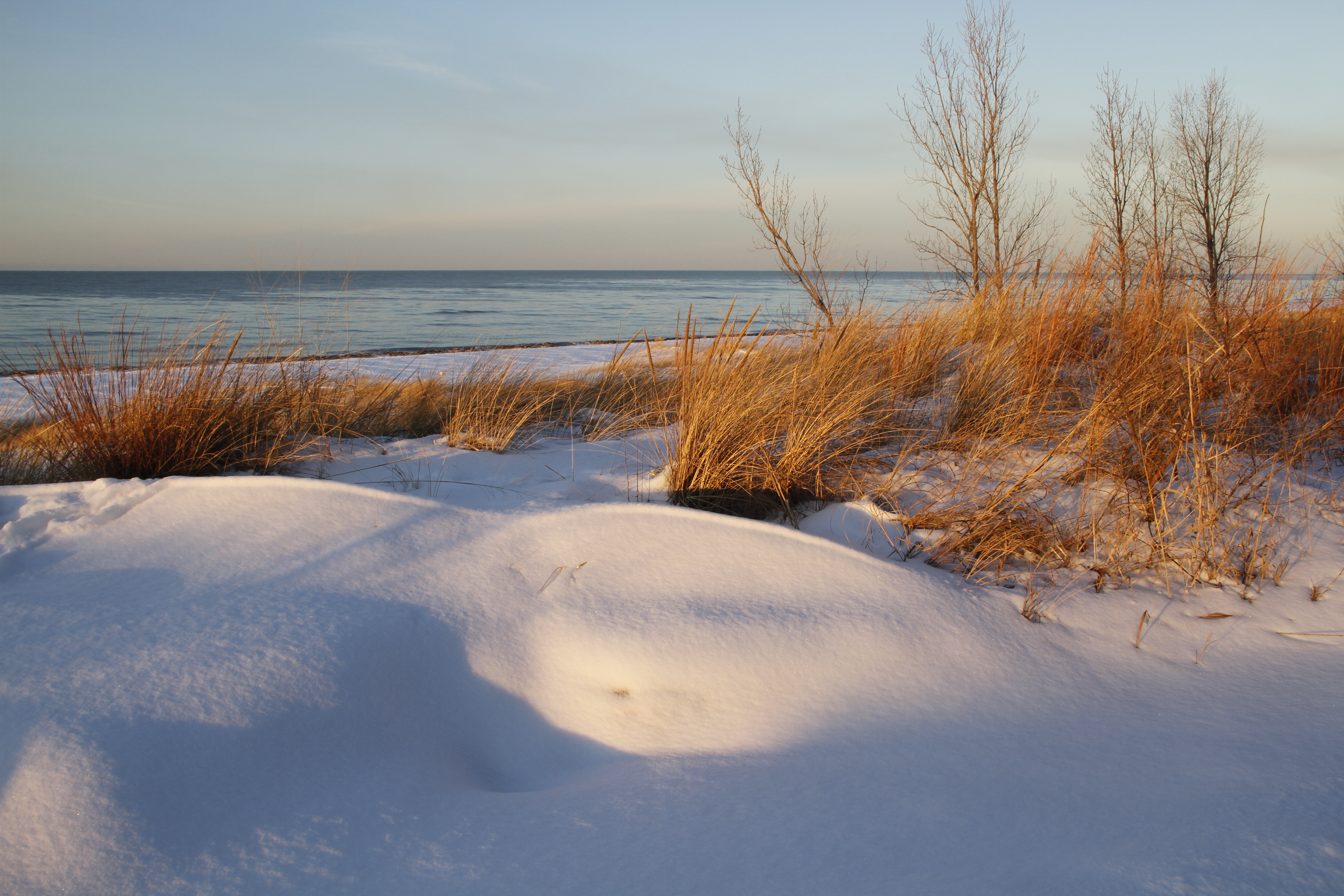
Lake View BeachLake View provides excellent views of the Lake, shoreline, and on clear days, Chicago. There is a large covered shelter here overlooking the beaches. Facilities are located just steps away from the sand. Parking is limited, be sure to park in the National Park's parking lot. 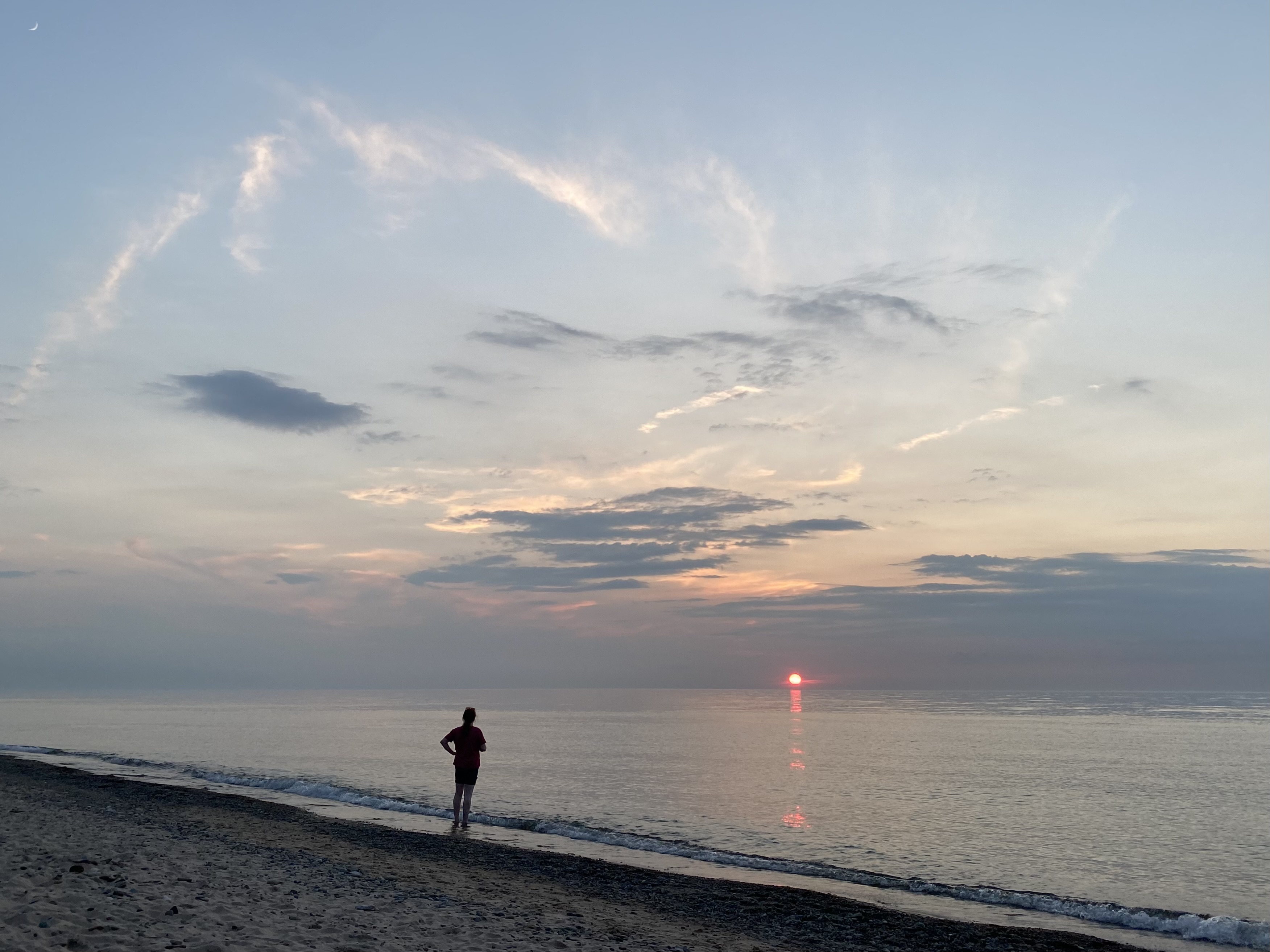
Mt. Baldy BeachMt. Baldy is the tallest moving sand dune in the National Park. The dune itself is closed, but the beaches are open. Facilities and parking are located less than 0.5 miles from the beach. Walk along the shoreline, enjoy breathtaking views of the Lake, dunes, and Michigan City Harbor. 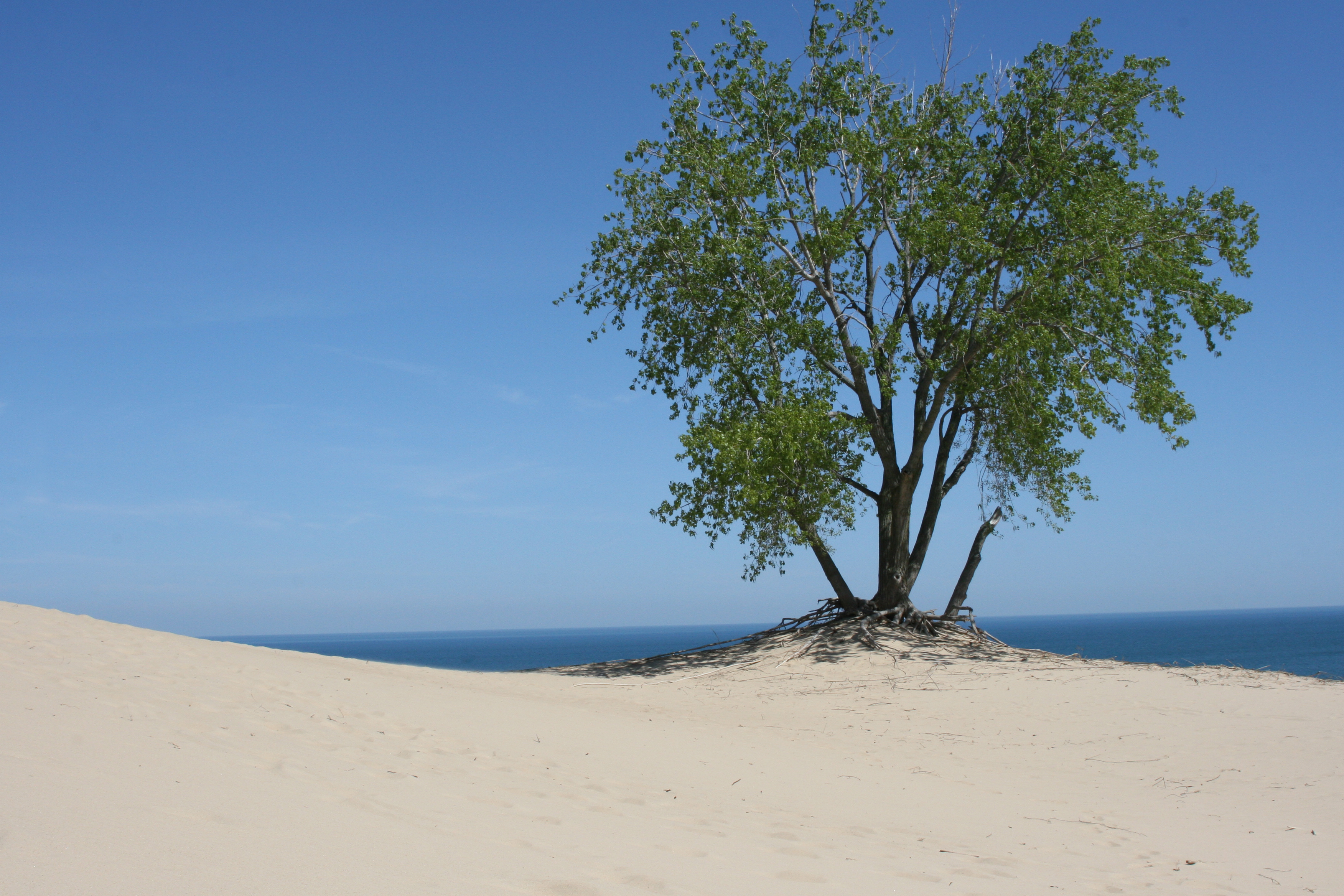
Mt. Baldy Beach TrailMount Baldy is 126 feet above the water level of Lake Michigan and is moving inland at about 4 feet per year. Beach sand on the dune moves when the prevailing northwest wind exceeds 7 mph. The movement of Mount Baldy is made worse because there is no longer sand collecting at the water's edge to bolster the dune. Beach erosion is taking away more sand from Mount Baldy than the waves are bringing in due to the breakwall that was built for the Michigan City Harbor. 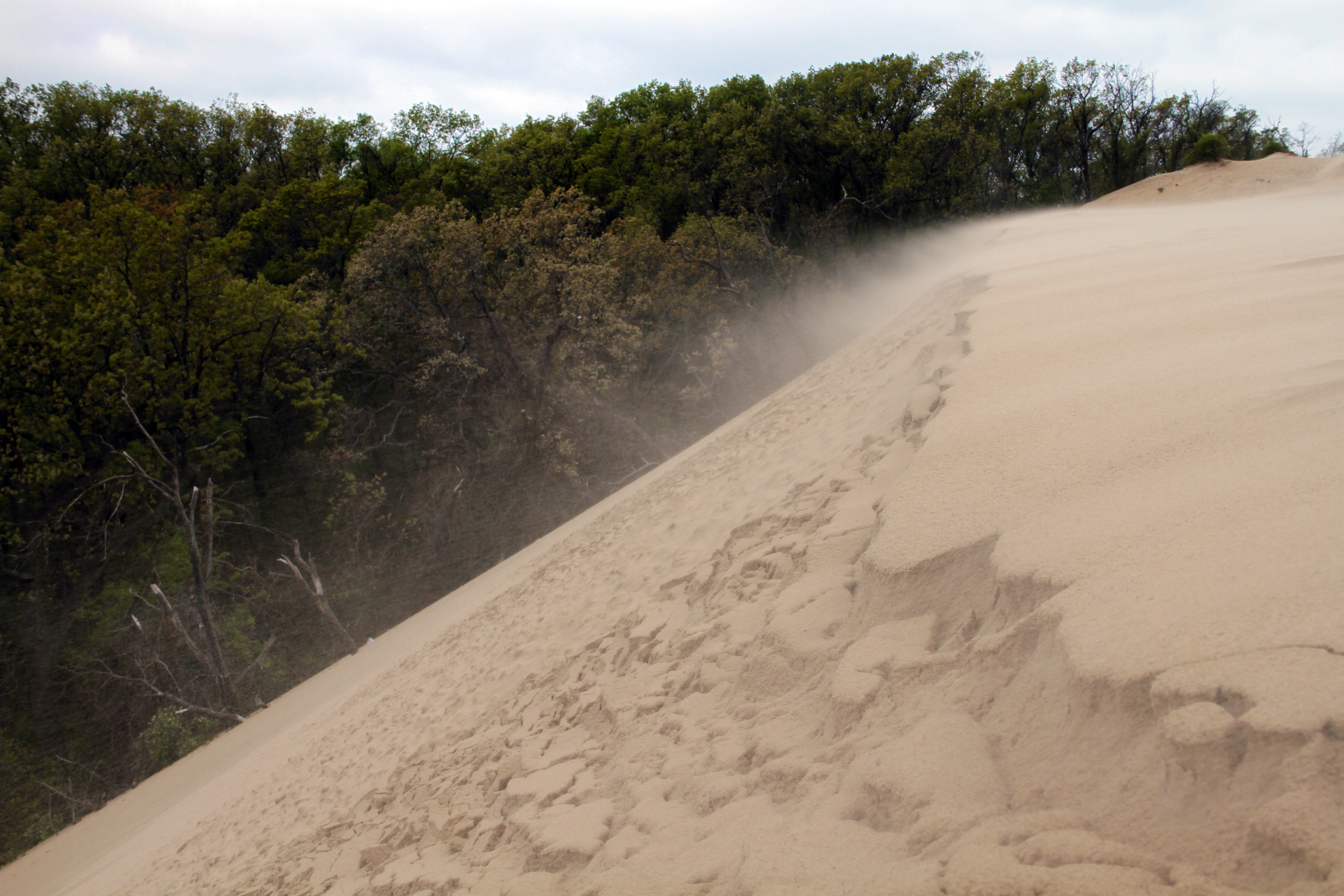
Paul H. Douglas CenterThe Paul H. Douglas Center for Environmental Education provides programming for school-aged children and adults through ranger-led talks, hikes, and activities. 
Paul H. Douglas Trail through Miller WoodsThe Paul H. Douglas Trail in Miller Woods winds through several habitats including wetlands, globally rare black oak savanna, open dunes and beach. The views of the lake and the dunes are incredible. The oak savanna's native grasses and wildflowers, including lupine, thrive in the sunlight and open forest floor. 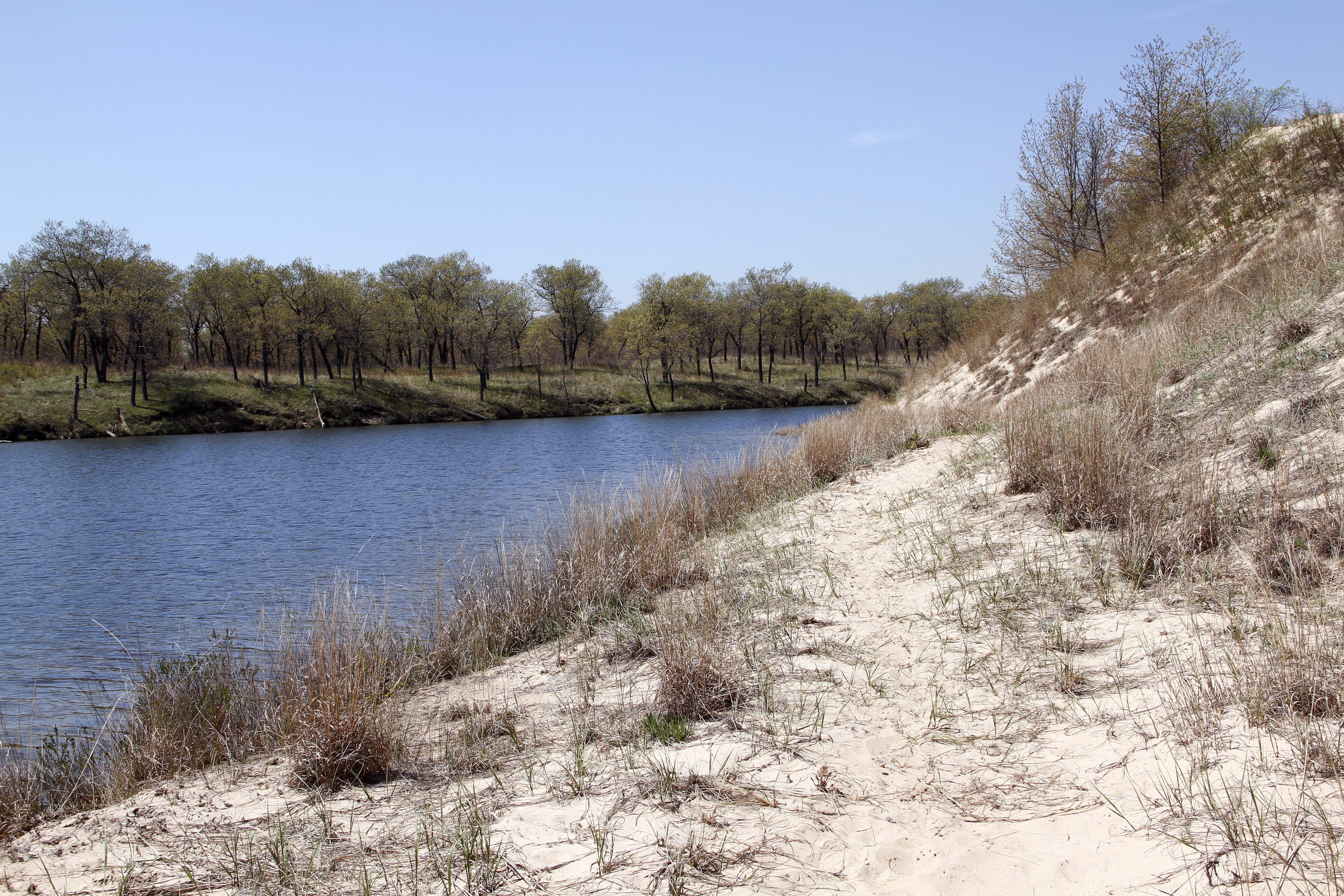
Portage Lakefront and Riverwalk BeachPortage Lakefront and Riverwalk was opened in October 2008. The redevelopment of the site, formerly used by a steel corporation as settling ponds for industrial byproduct and a sewage treatment facility, is a successful model of brownfield reclamation.The land, buildings, and facilities at the site are owned by the National Park Service and operated in partnership with the City of Portage. 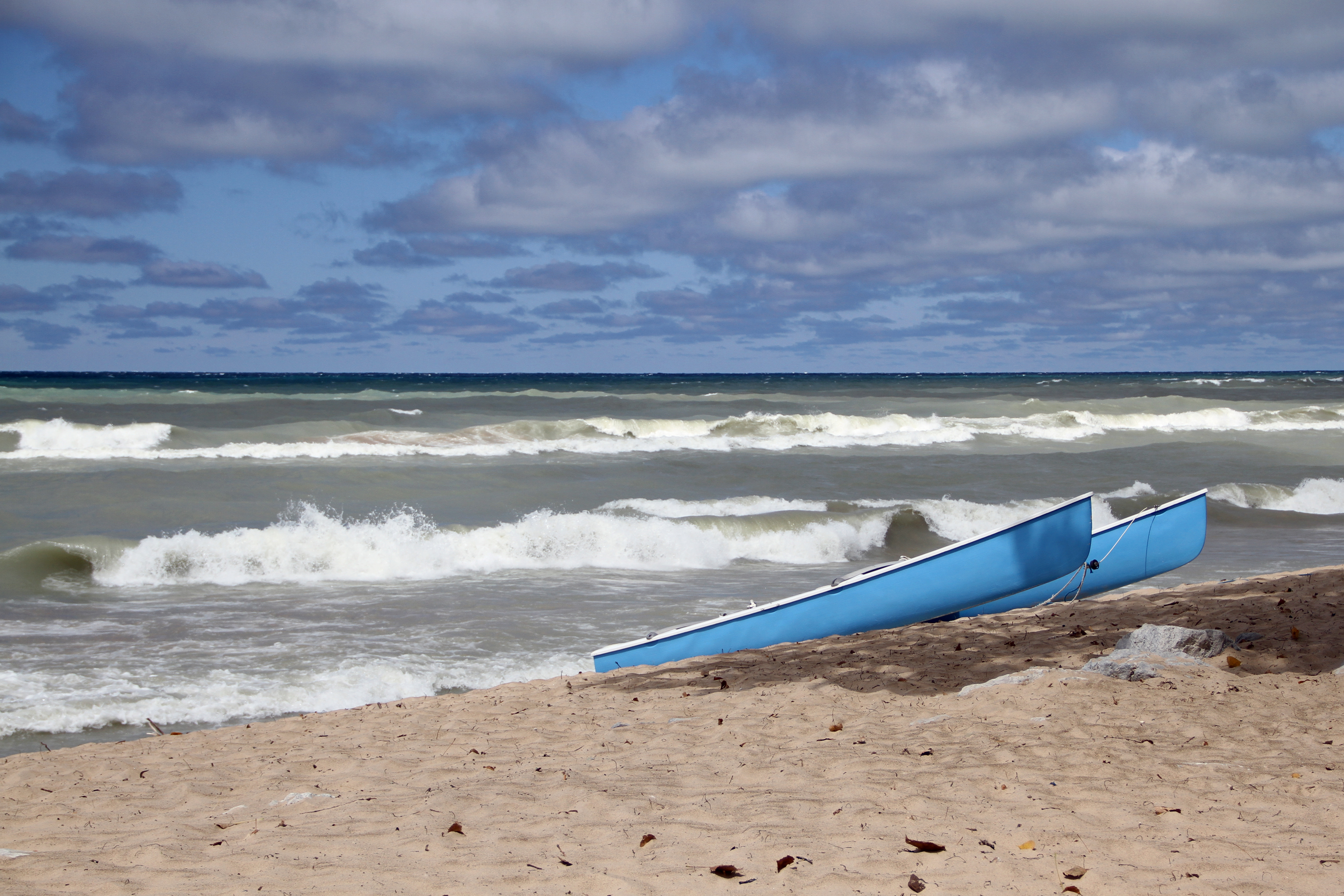
Portage Lakefront and Riverwalk PavilionThis 3,500 square foot public pavilion includes restrooms, a seasonal snack bar, and a glass walled classroom/meeting space. 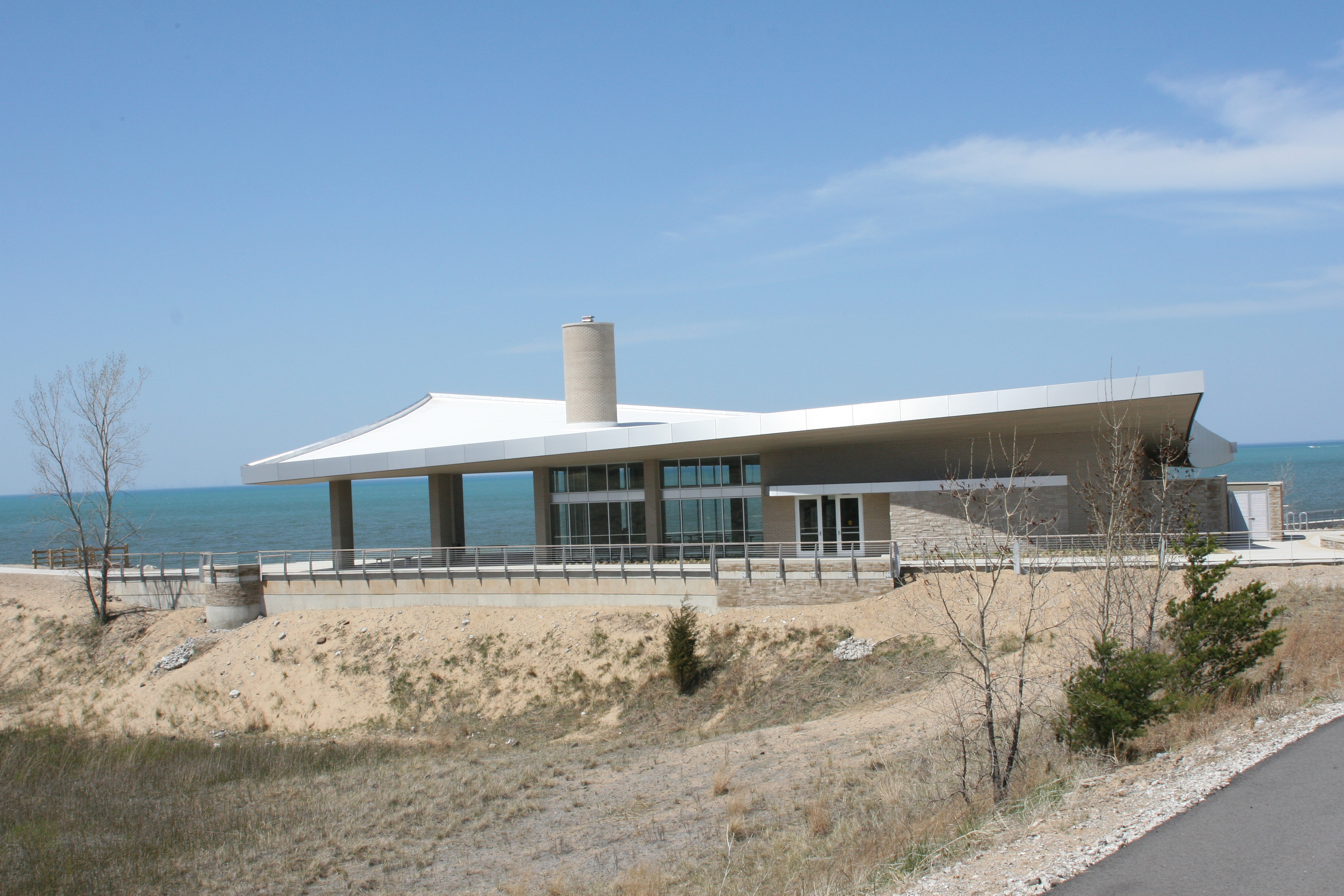
Portage Lakefront and Riverwalk TrailThis popular location is a great place to view the ever-changing seasons along Lake Michigan and watch dramatic weather and clouds build over the lake. It's an easy location to watch for migrating birds in the spring and summer, and observe shelf ice that forms along the beach edge in the winter. Visitors can enjoy easy access to the lakefront and trails that highlight dune succession. 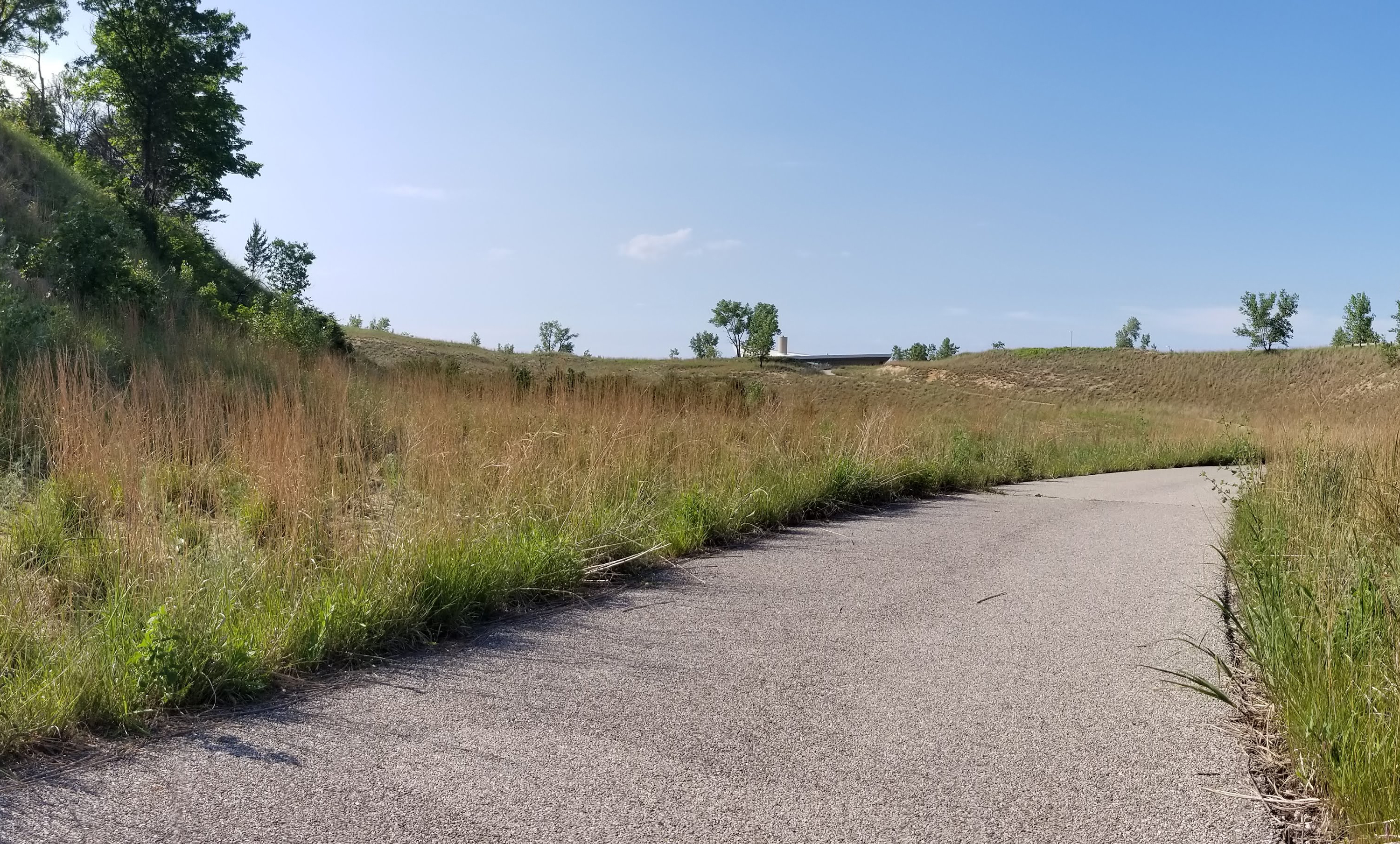
Porter BeachPorter Beach provides excellent swimming and sunbathing opportunities with access to two parking lots and facilities close to the beach. 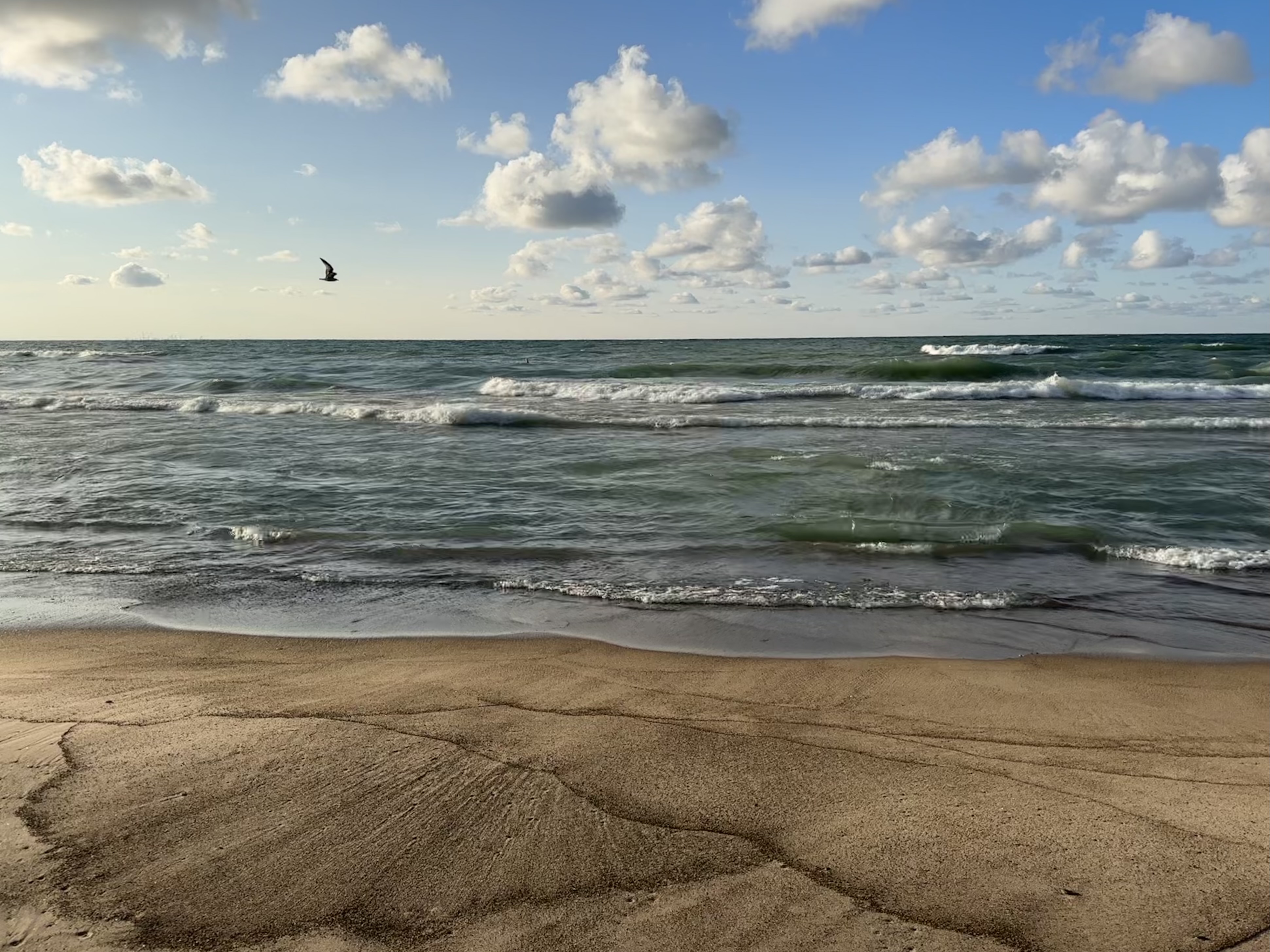
Stephen Mather Memorial Plaque (Lake View)Stephen T. Mather was a businessman and conservationist. His vigorous efforts as the special assistant to the Secretary of the Interior helped persuade Congress to create the National Park Service in 1916. He was appointed its first director in May 1917. 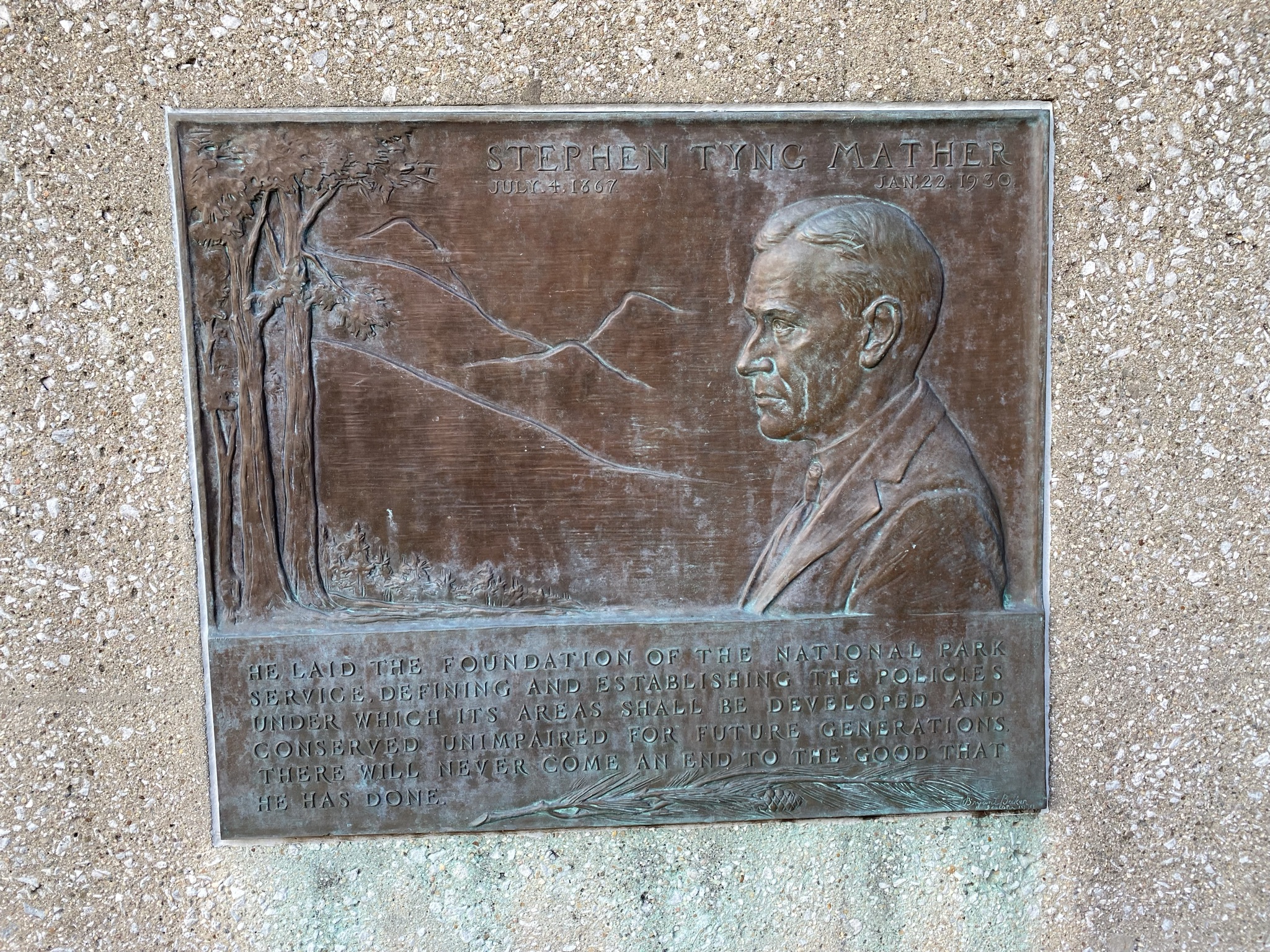
Tolleston Dunes OverlookThis overlook provides a scenic view of the Tolleston Dunes Trail, which winds amid 4,700 year-old sand dunes that were formed when Lake Michigan's water level was 25 feet higher than today. Tolleston is the second youngest of four distinct dune systems found within the national park. Together these dune ridges provide a glimpse into the changing shoreline of Lake Michigan. 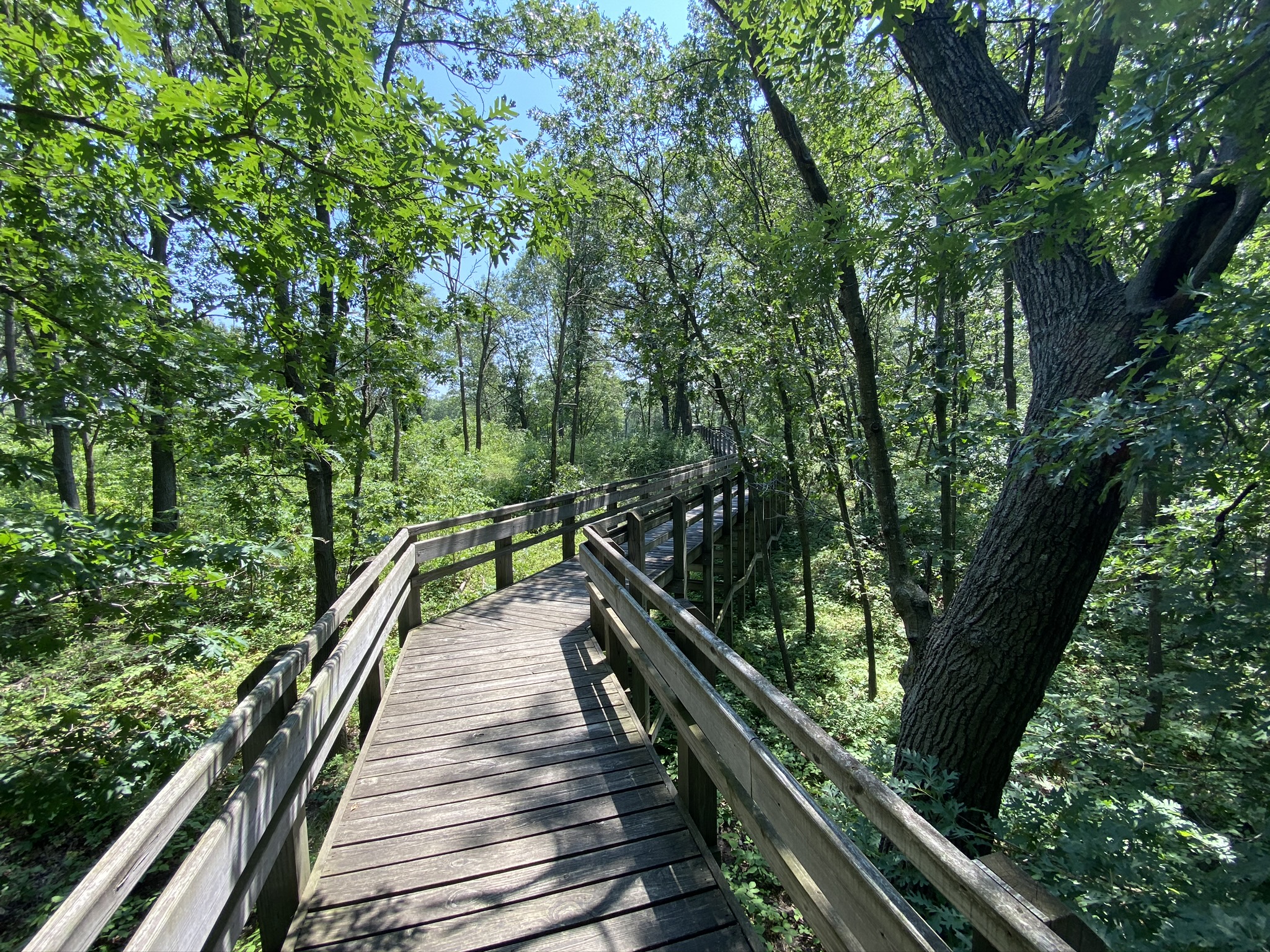
Tolleston Dunes TrailThe Tolleston Dunes Trail winds amid 4,700 year-old sand dunes that were formed when Lake Michigan's water level was 25 feet higher than today. Tolleston is the second youngest of four distinct dune systems found within the national park. Together these dune ridges provide a glimpse into the changing shoreline of Lake Michigan. 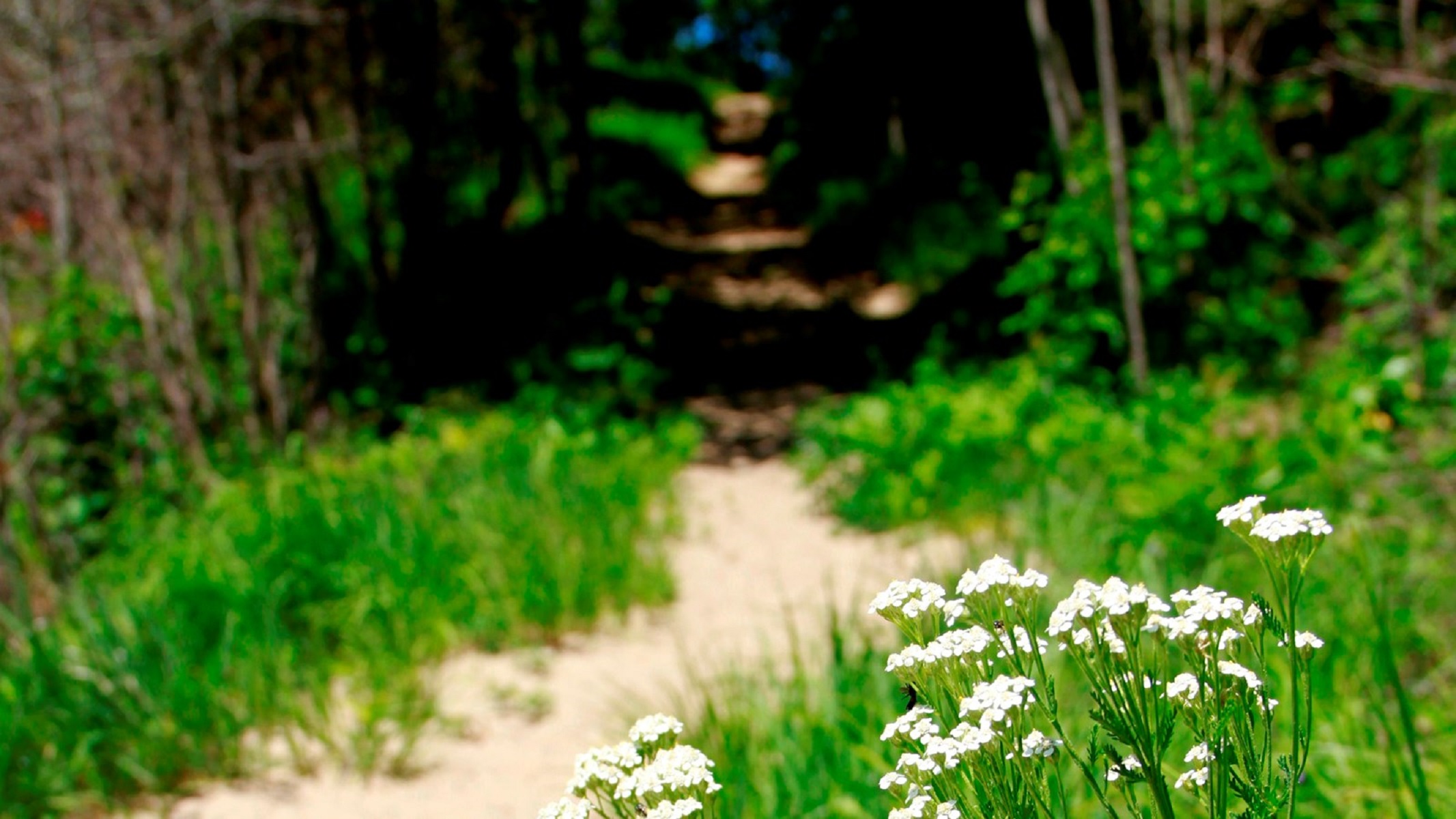
Upland TrailThe Pinhook Bog Trail System features two very different habitats. The Upland Trail highlights a rich beech and maple forest growing on top of a glacial moraine formed about 15,000 years ago. The Bog Trail leads to a bog in a depression in the moraine created when a large piece of ice broke off the melting glacier. The bog features an incredible habitat with unique plants. 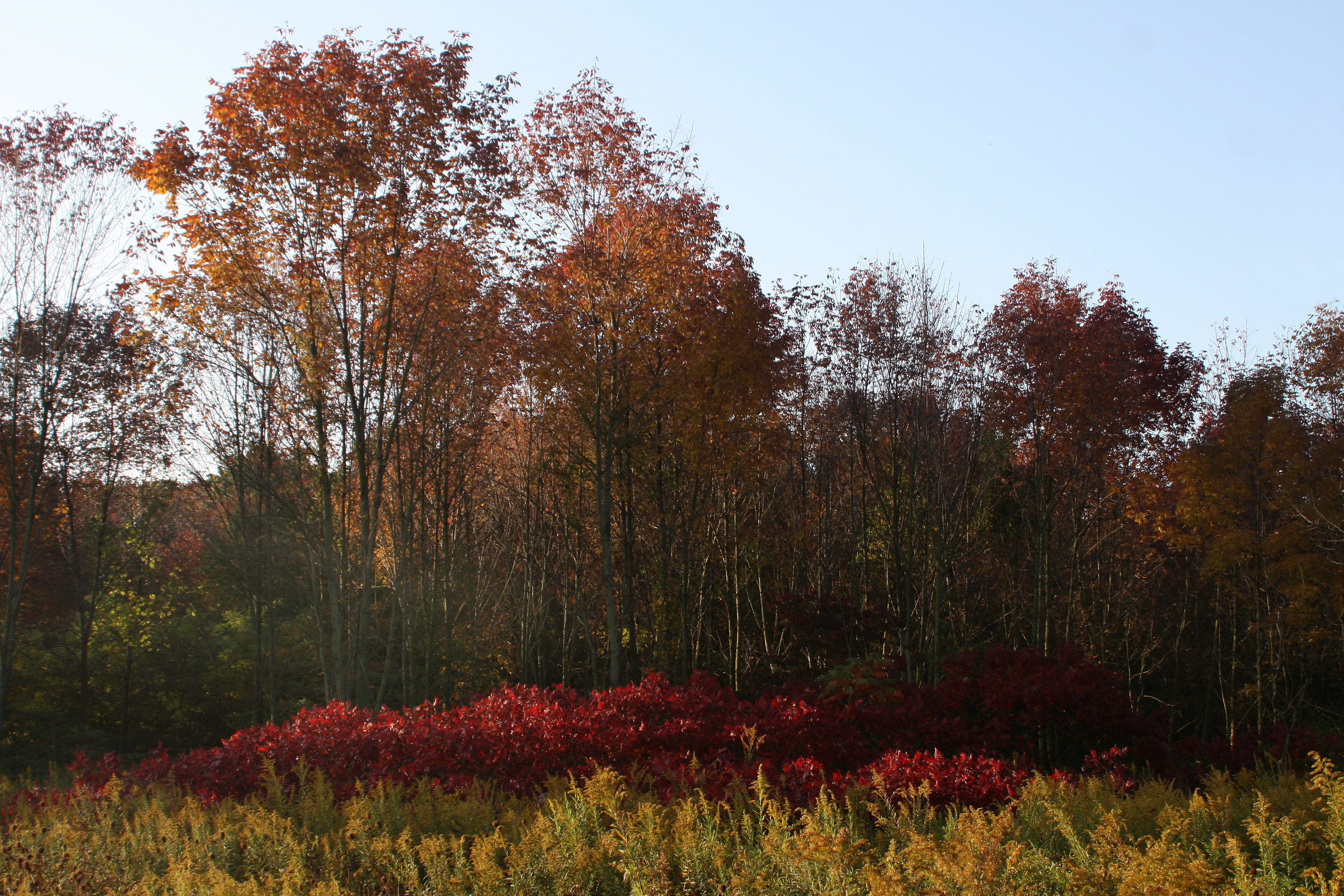
West BeachWest Beach is the most popular destination in the National Park each summer. Lifeguards, a bathhouse, hiking trails, picnic shelters, and a large parking lot make this the idea destination on those hot summer days. 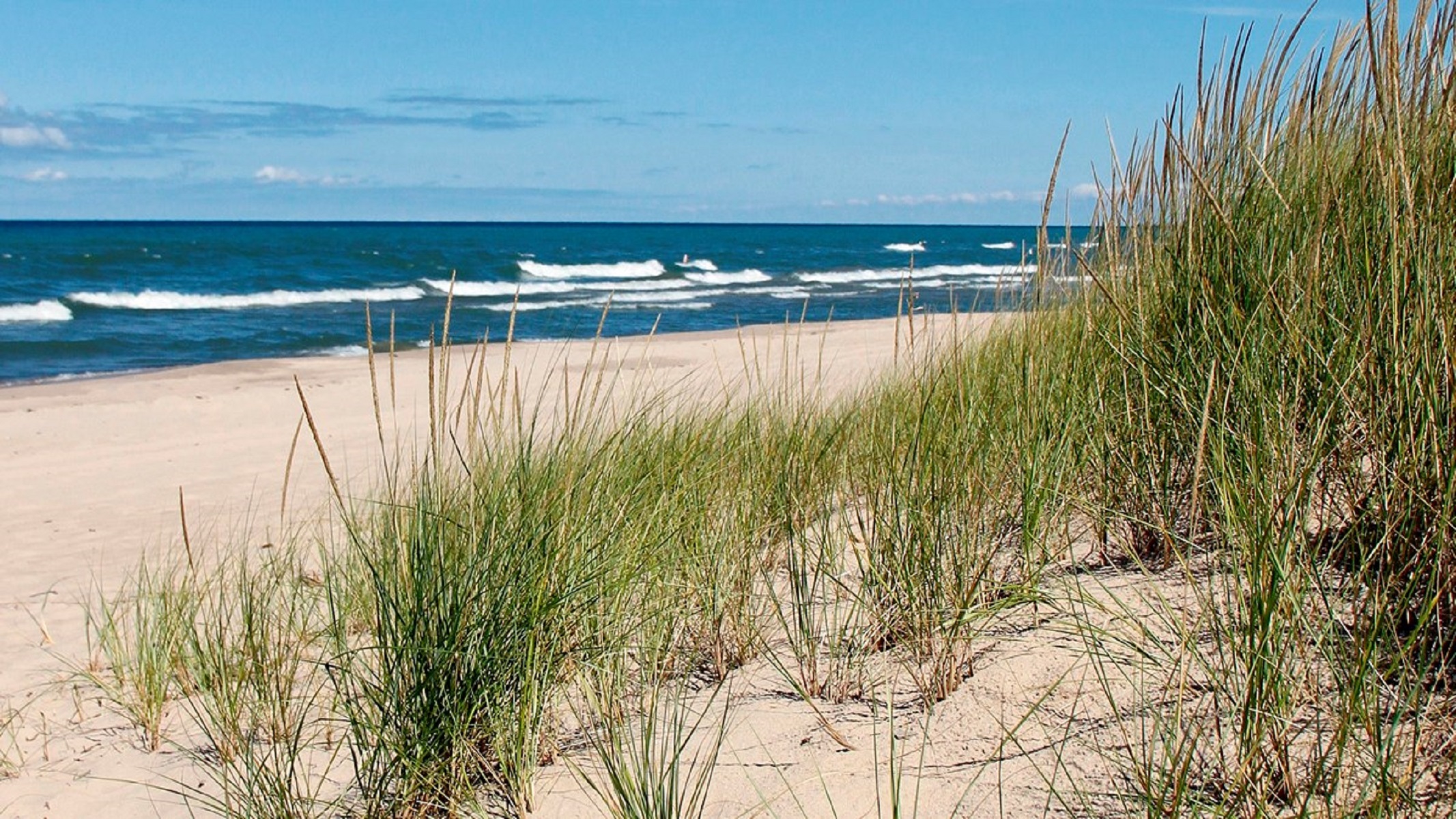
West Beach TrailsWest Beach offers a great combination of hiking and relaxing at the beach. The trails are varied and encompass many habitats. There are great views from the top of the Dune Succession Trail stairs, a beautiful pinery of jack pines, birding opportunities along Long Lake and secluded sections of forest. After hiking, relax and swim at the beach. 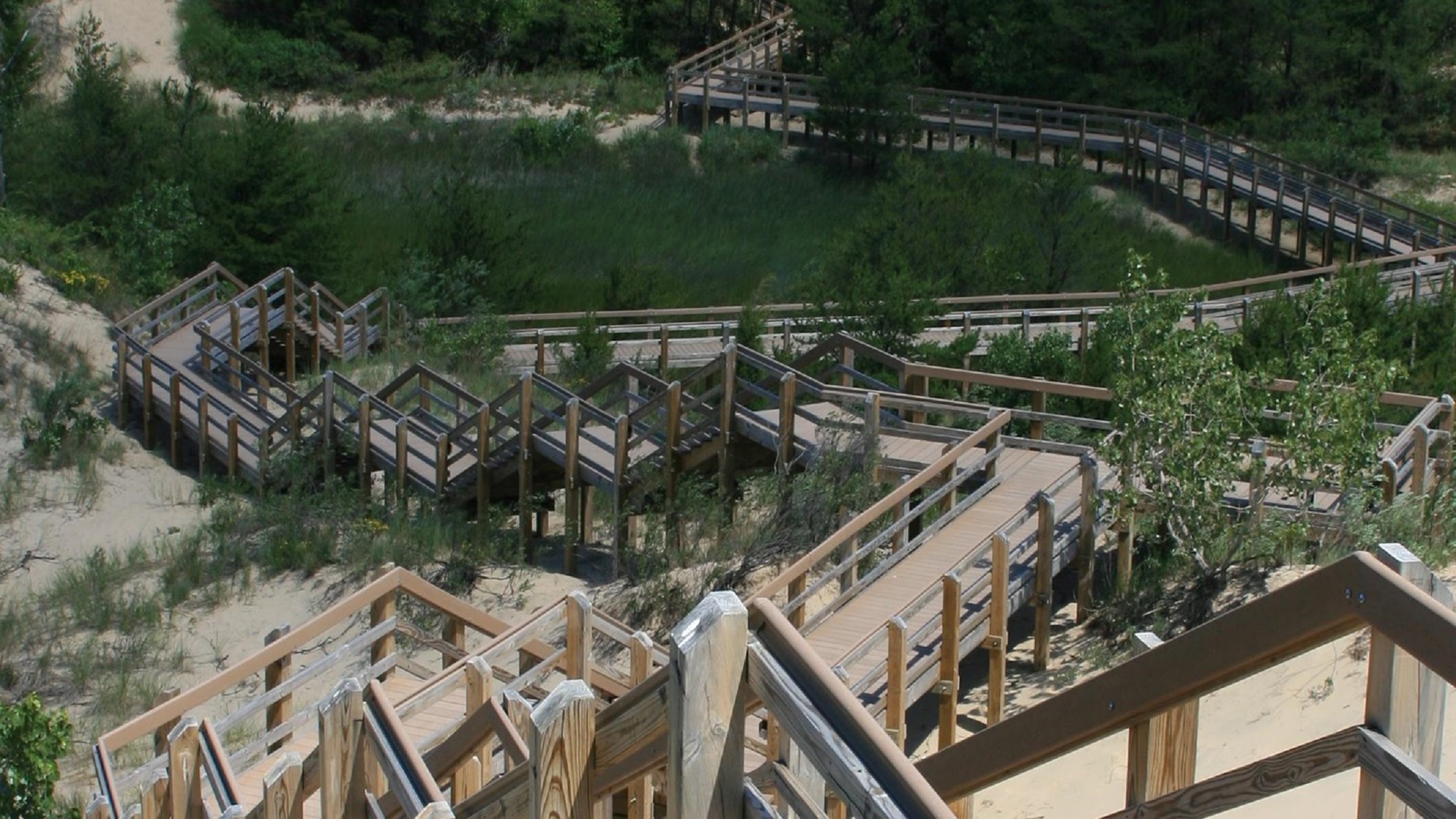
|
| Visitor Centers | Count: 2
Indiana Dunes Visitor Center (Dorothy Buell Memorial Visitor Center)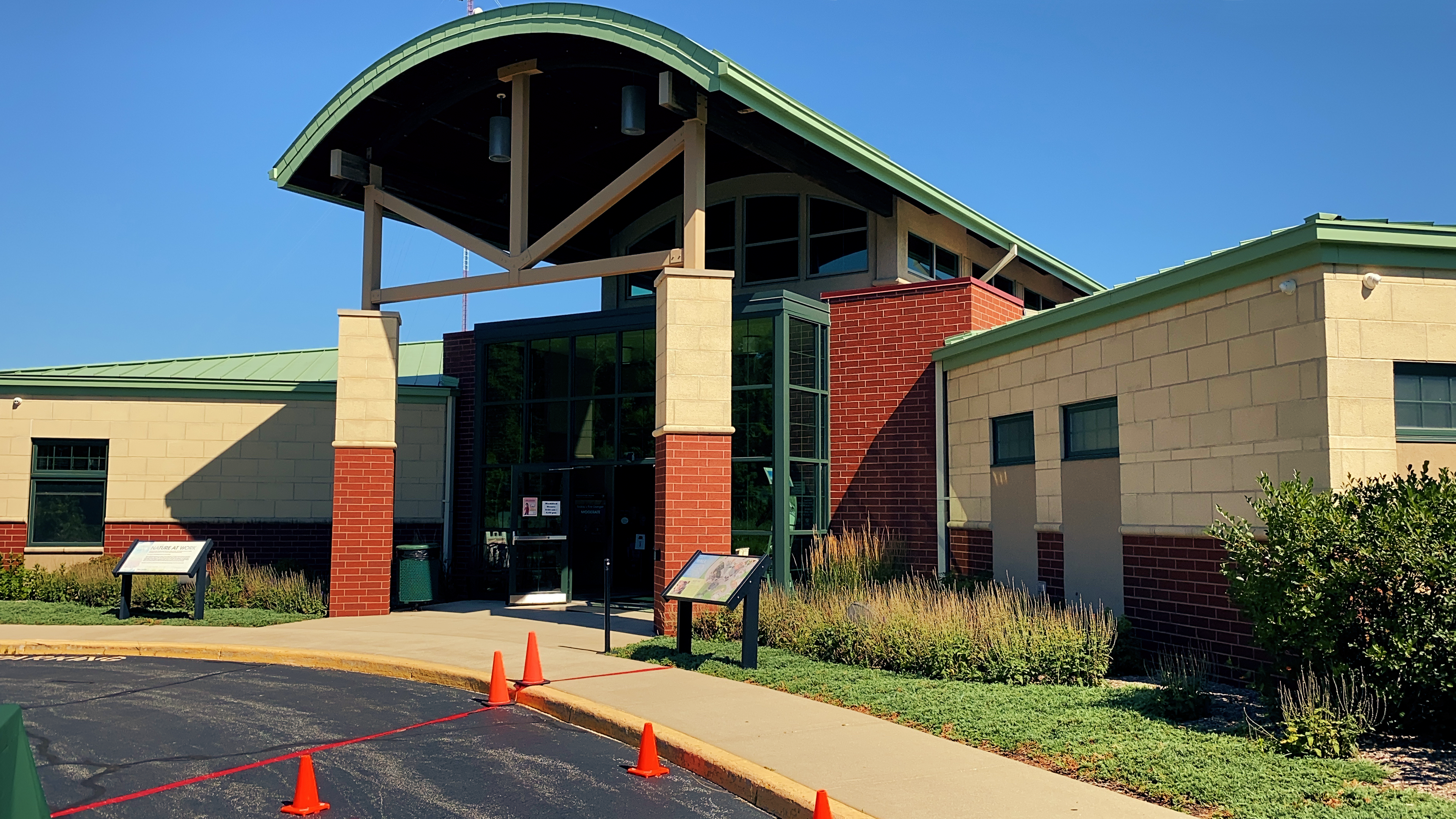
Paul H. Douglas Center for Environmental Education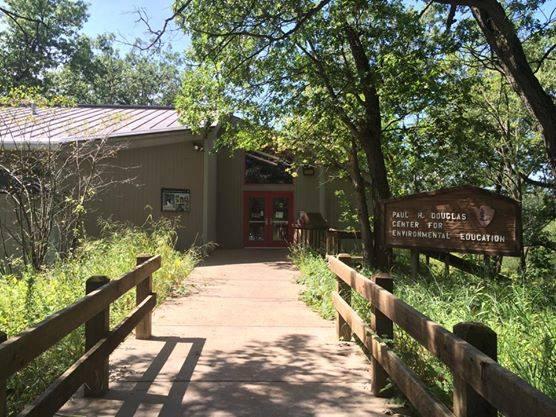
|
| Things to do | Count: 12
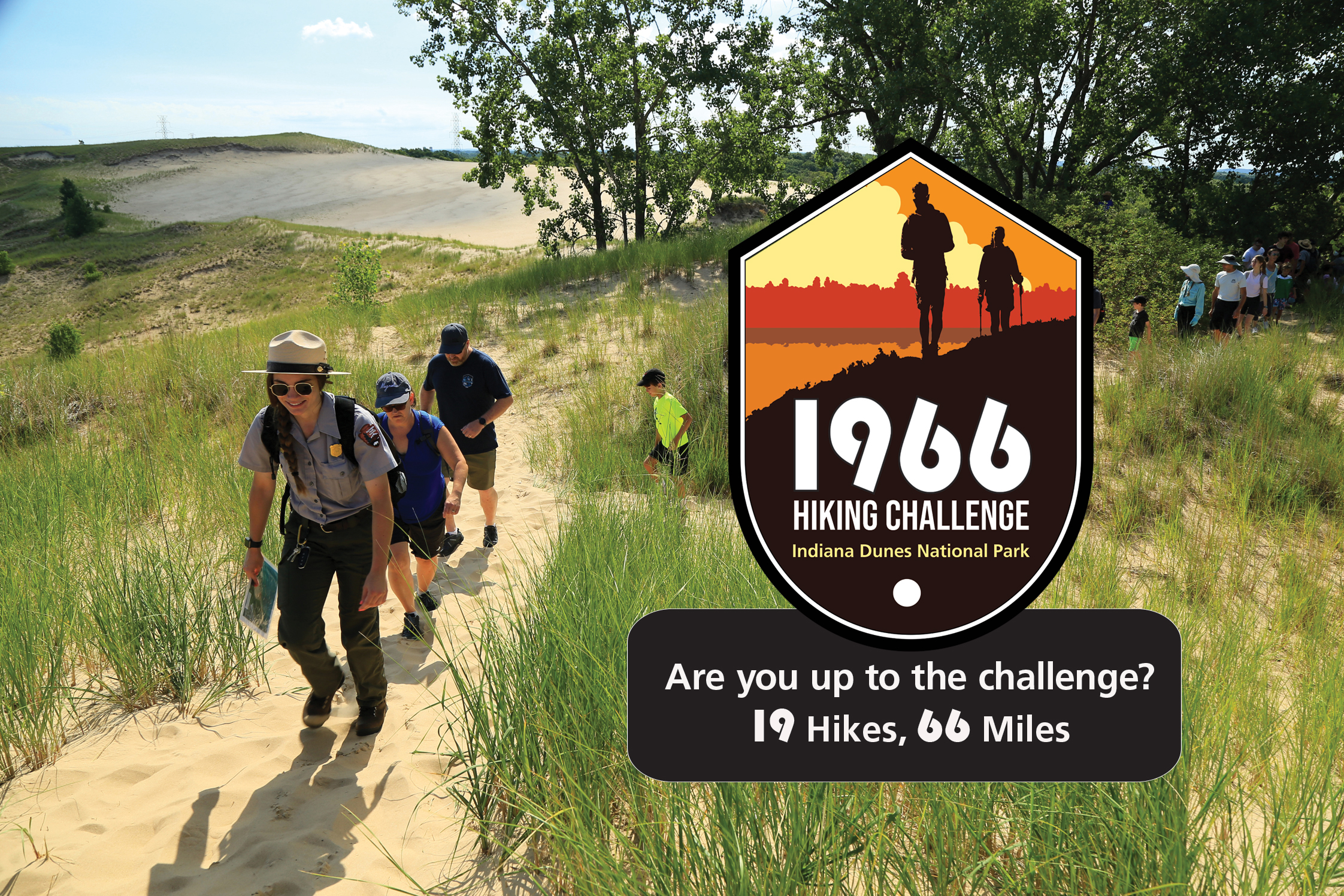
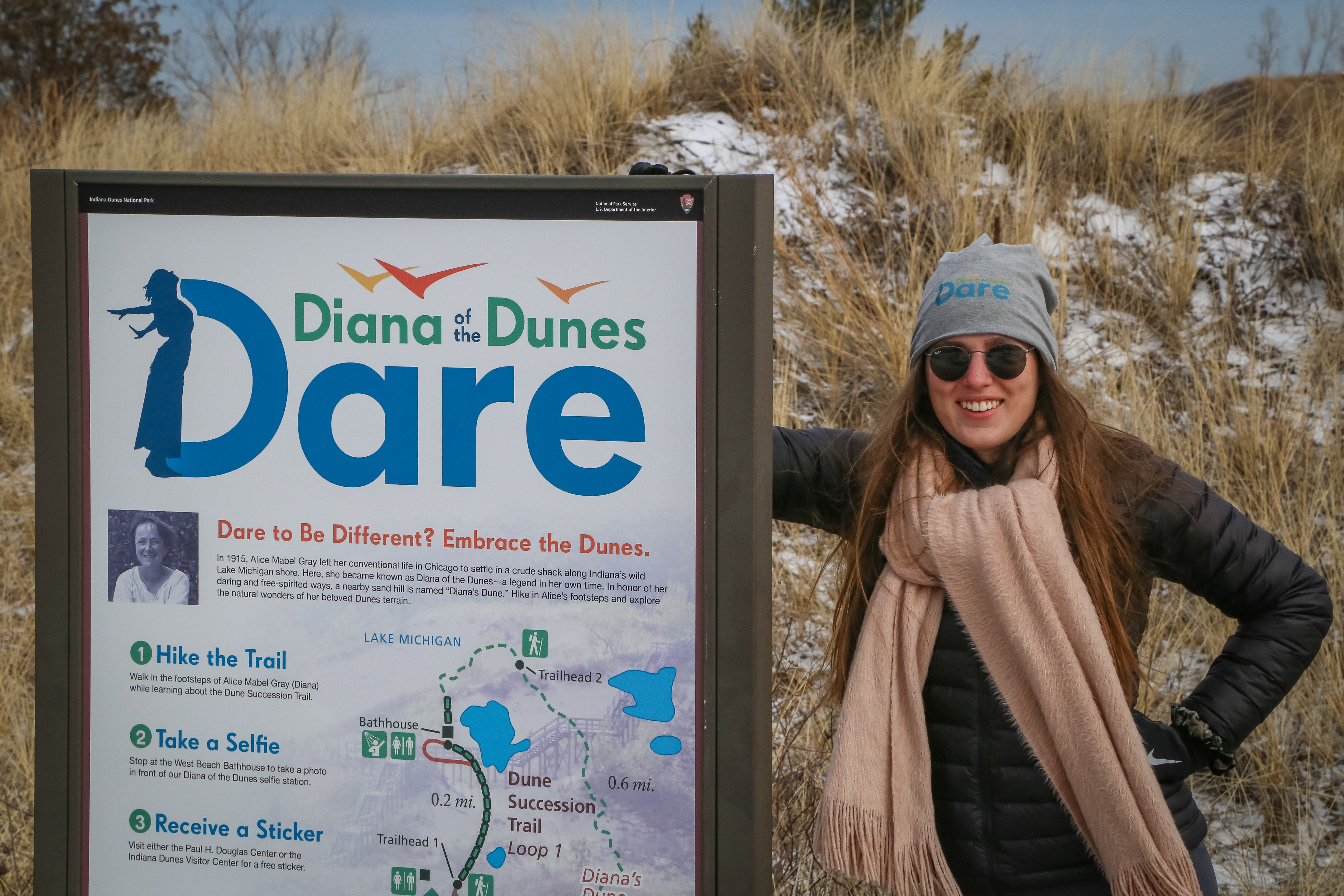
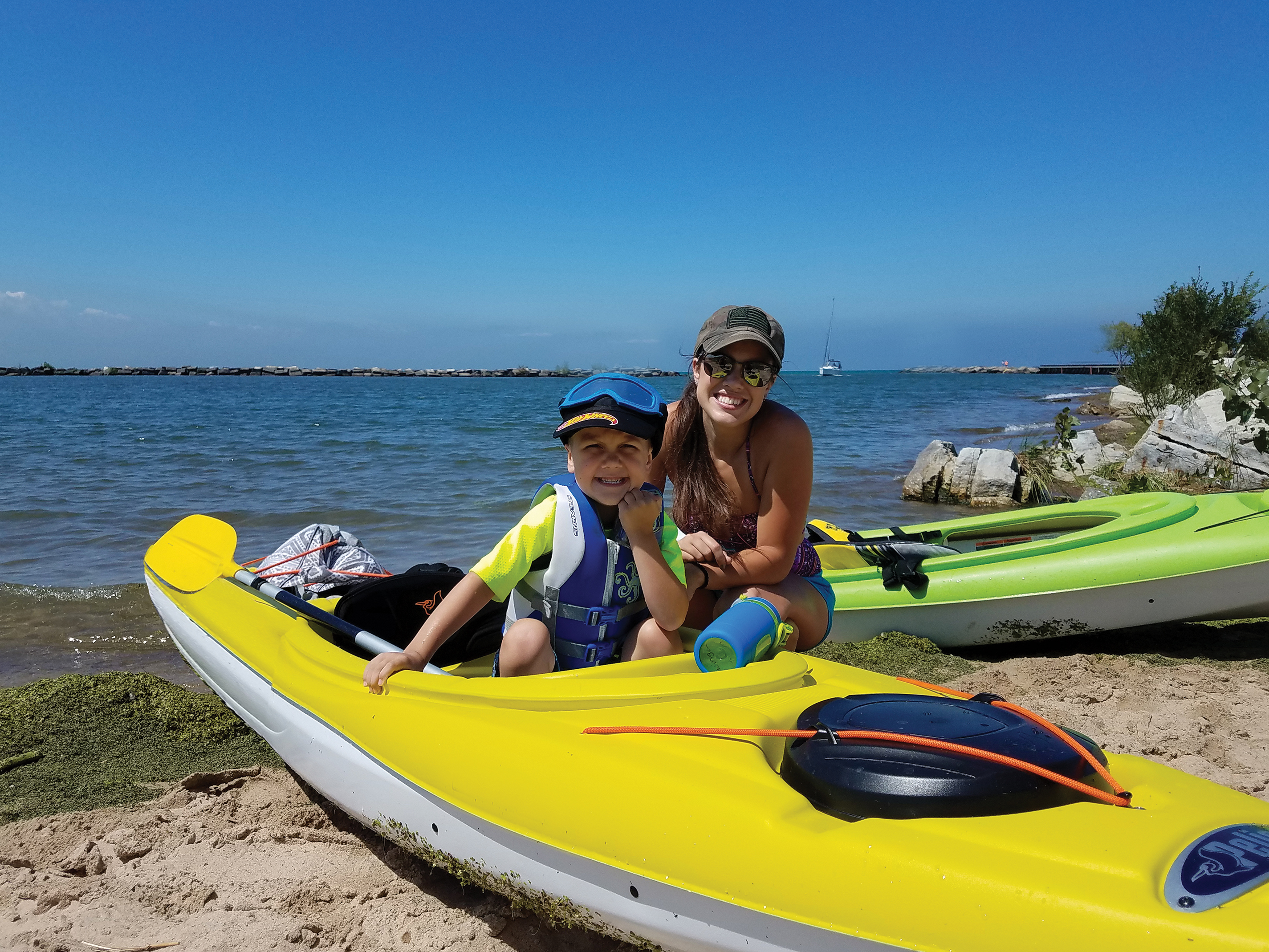
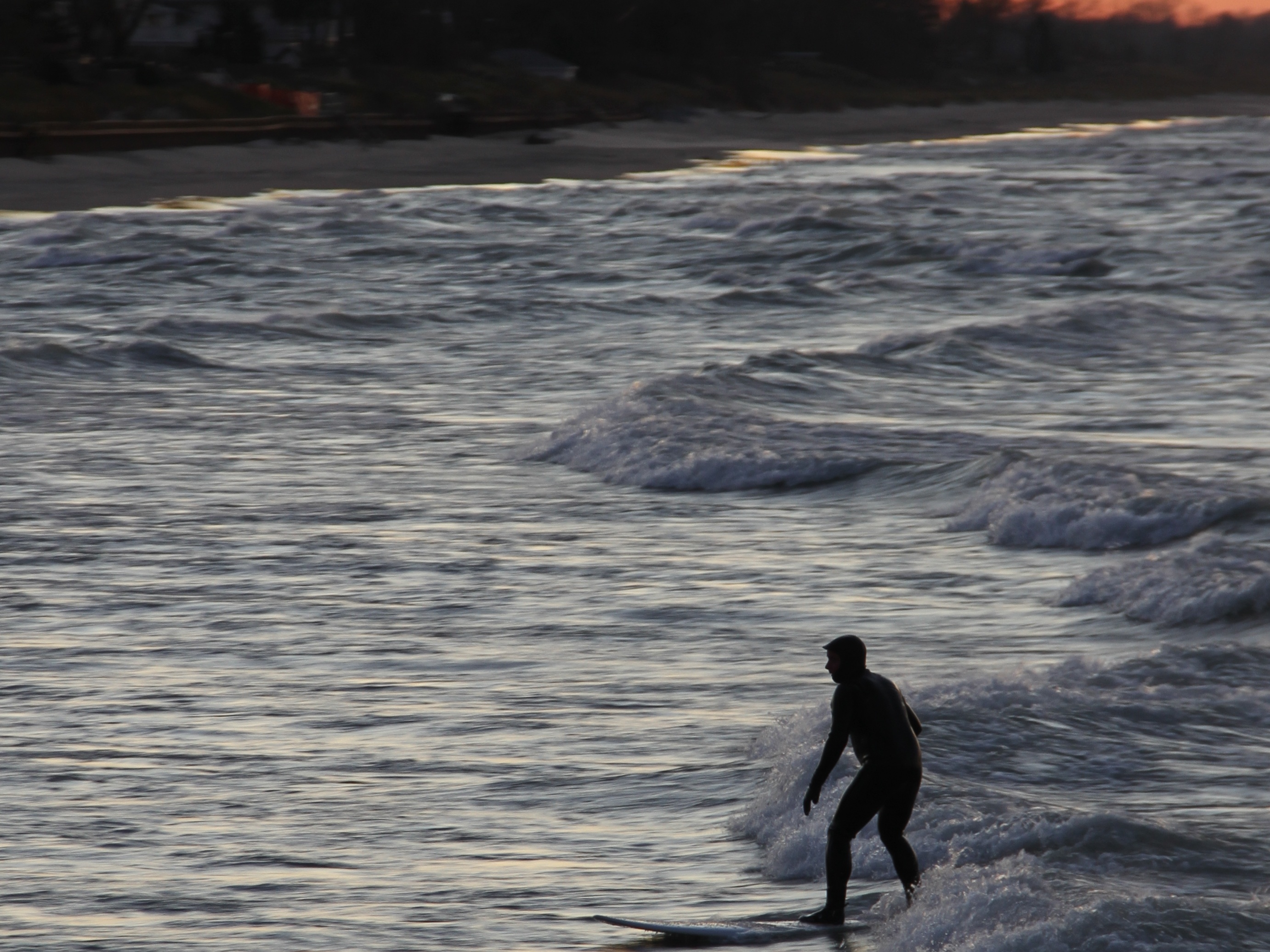
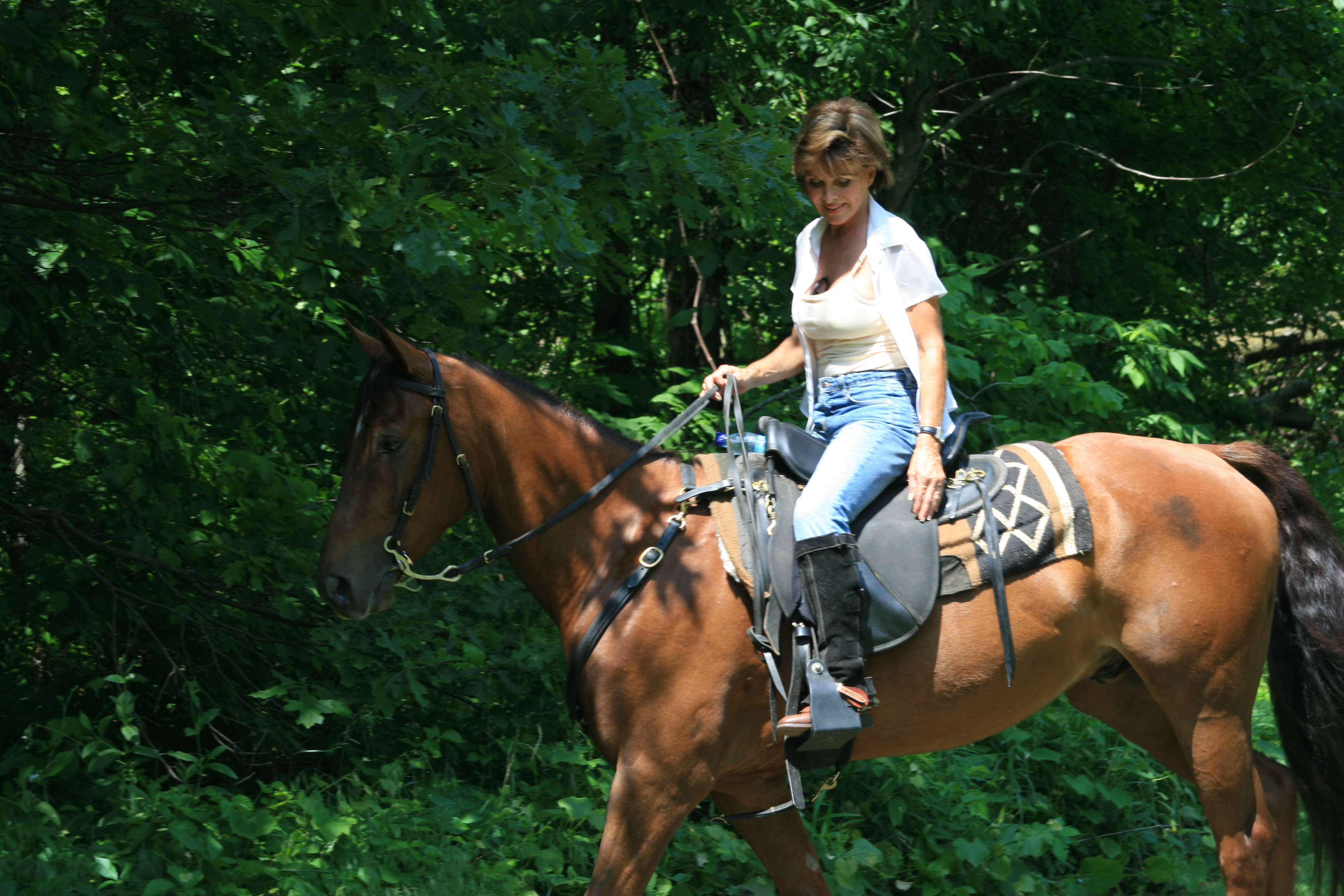
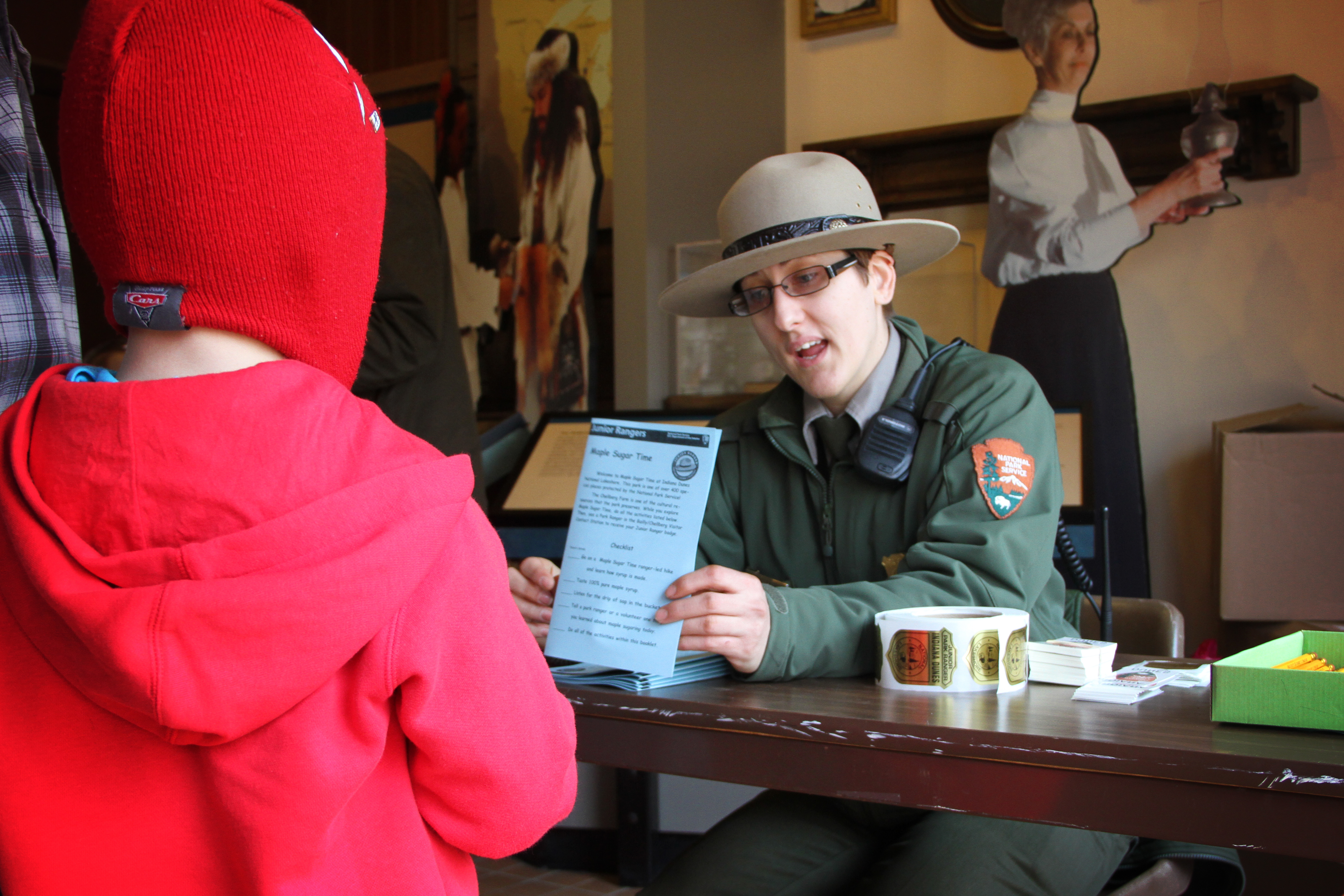
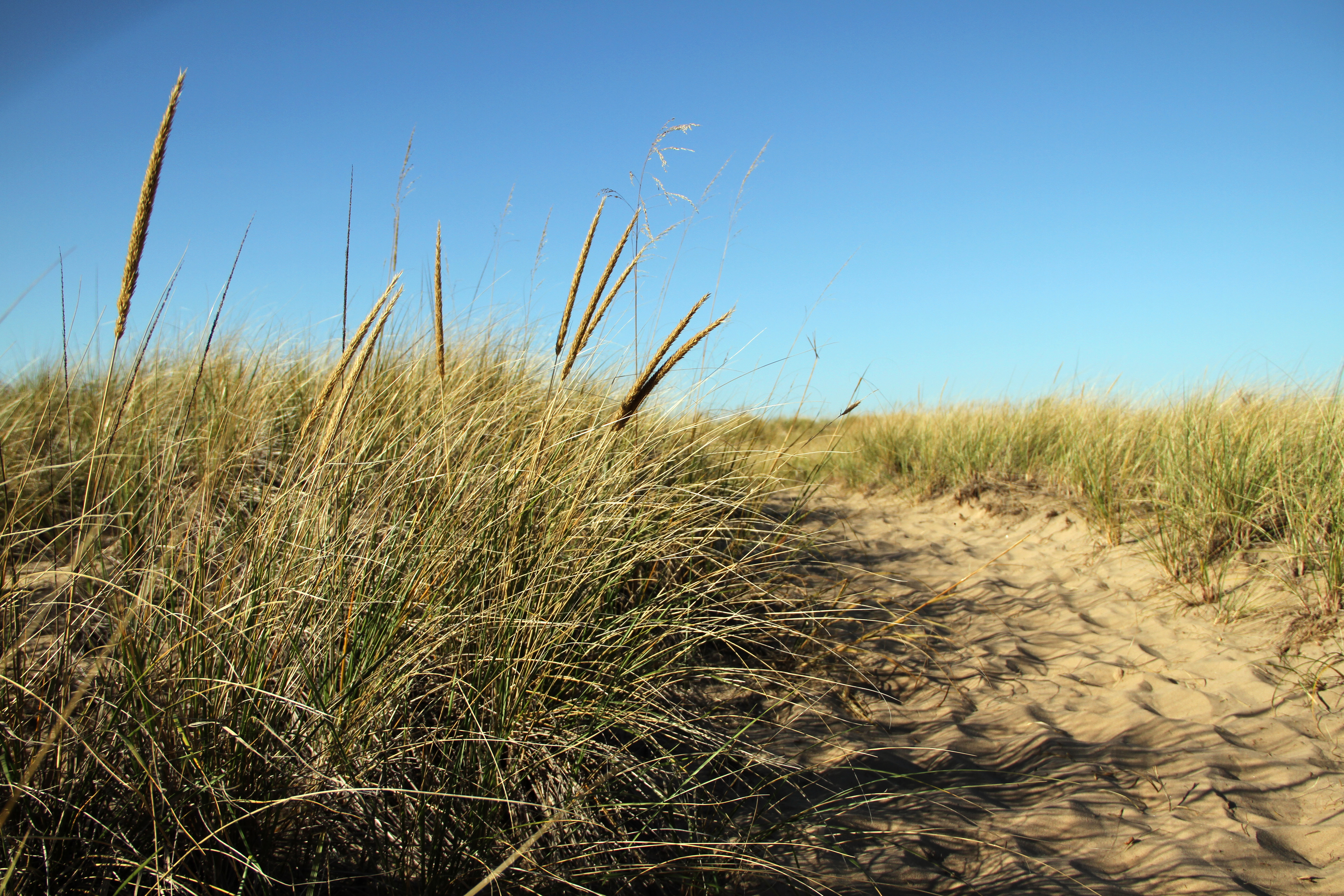
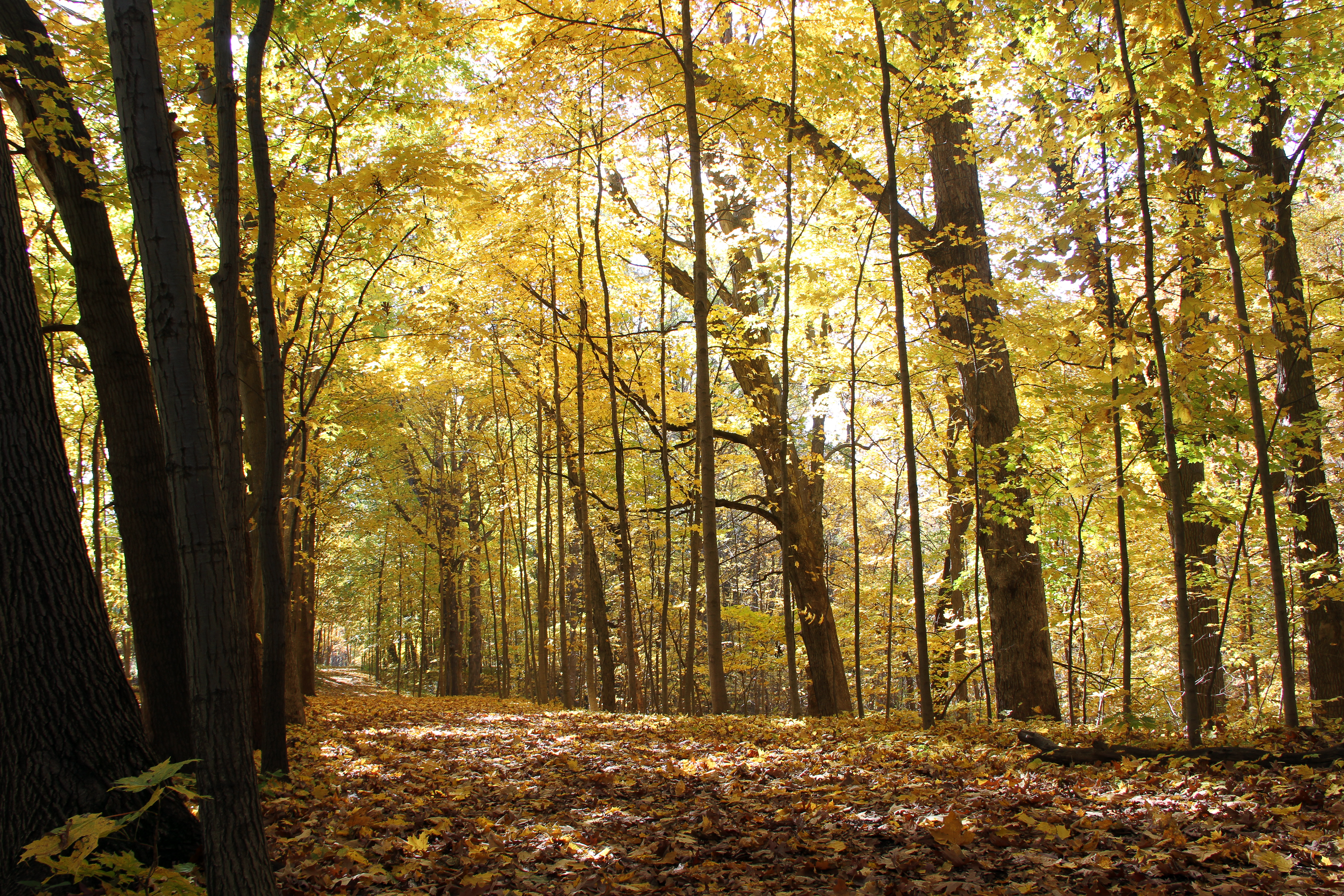
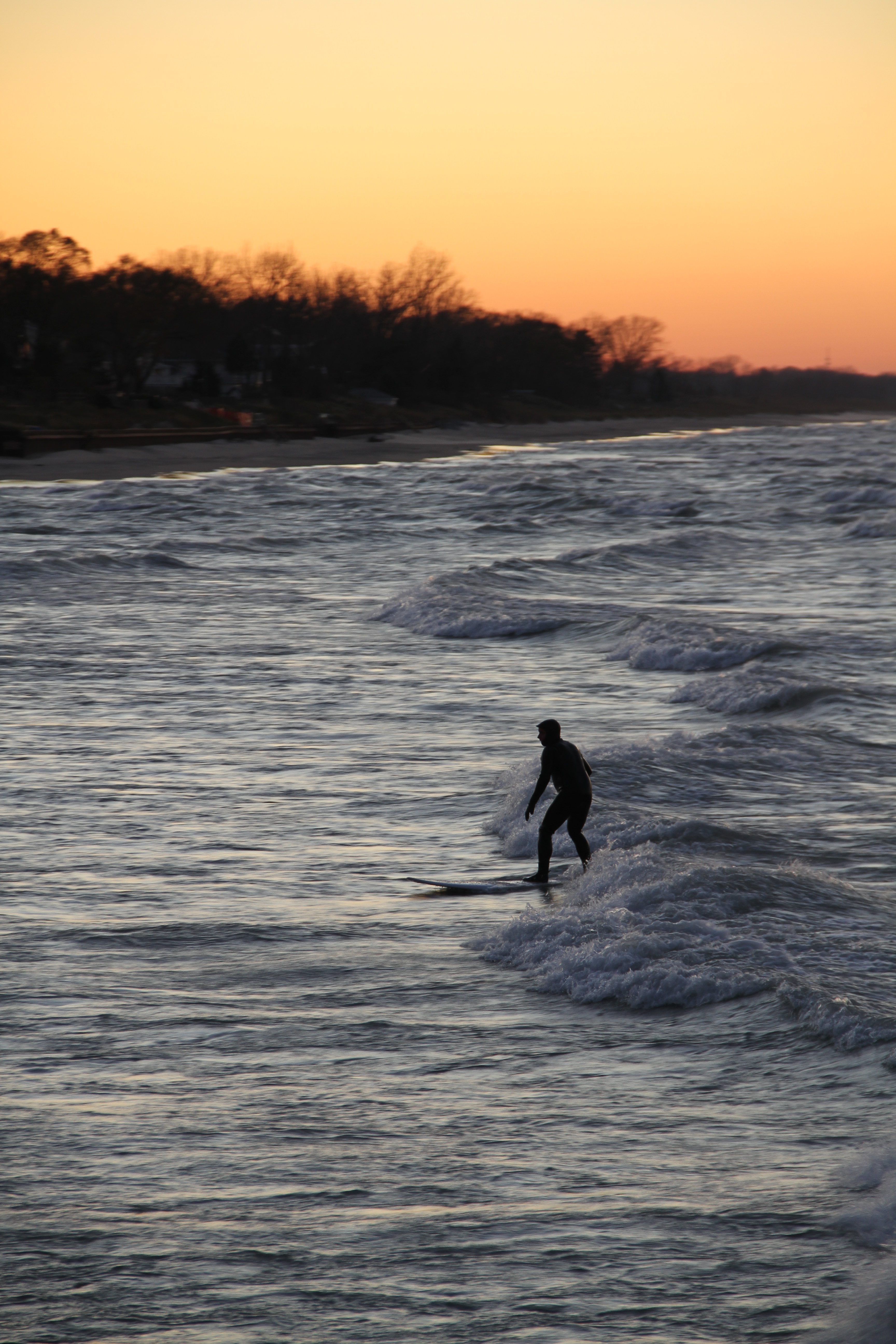
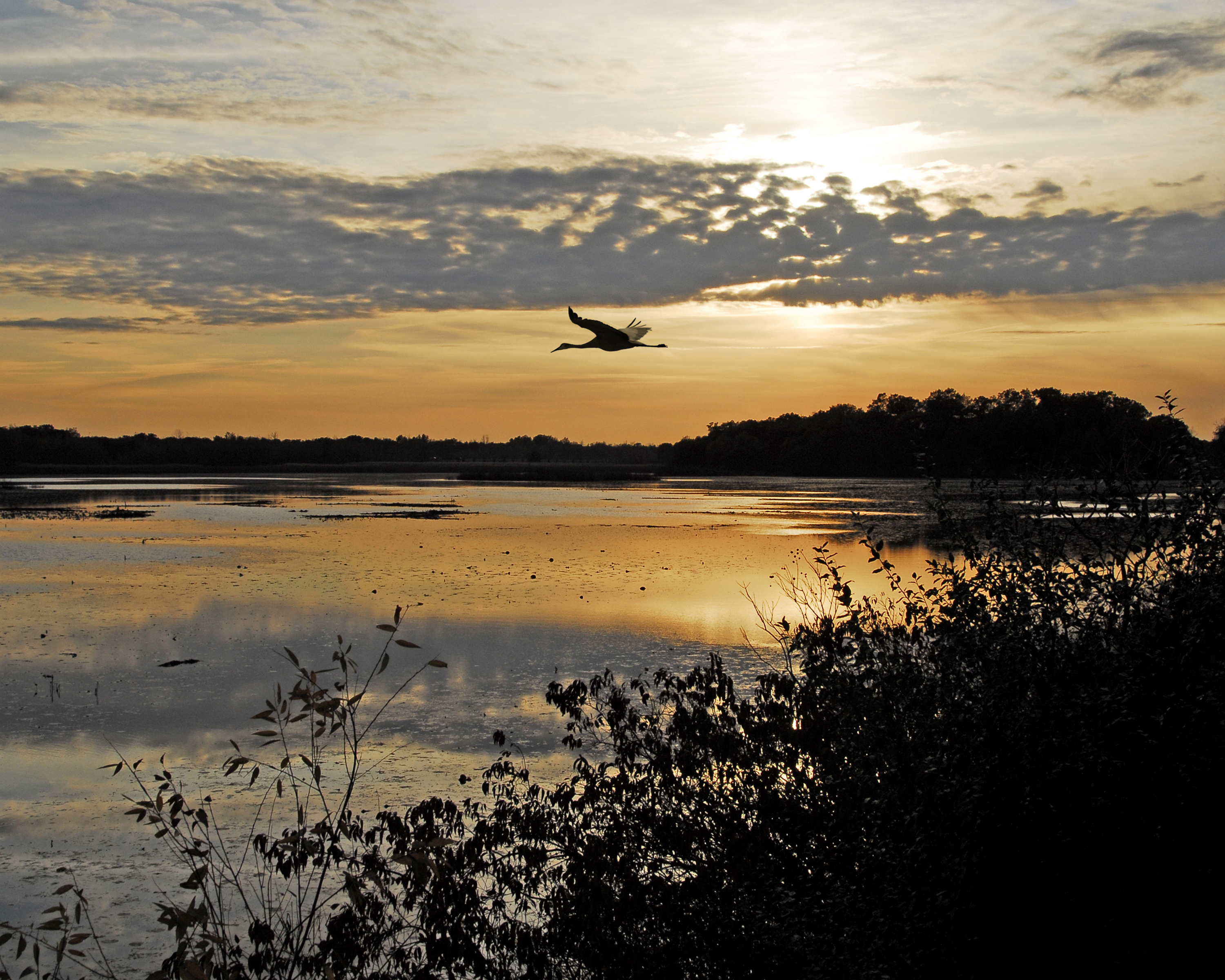
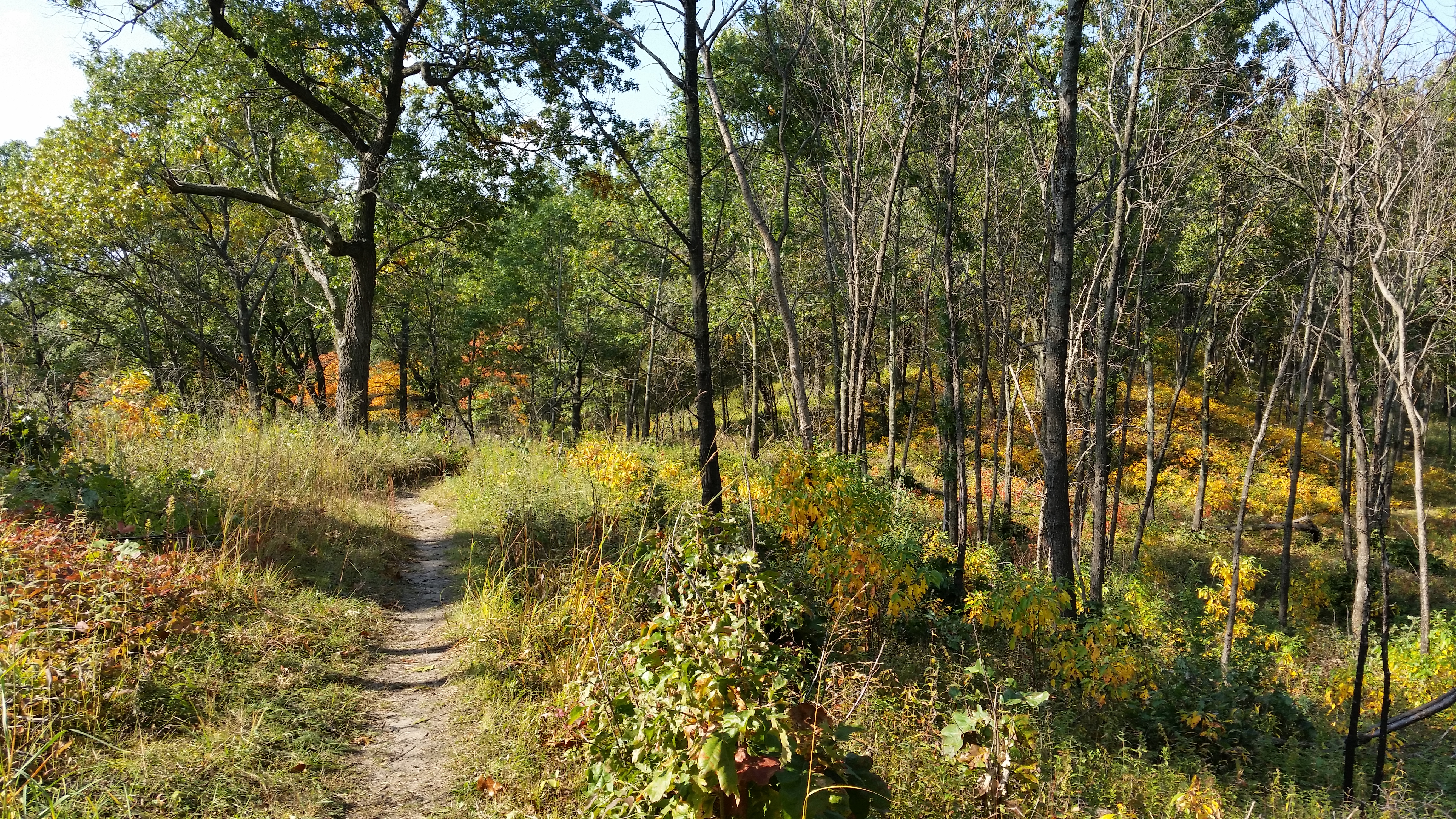
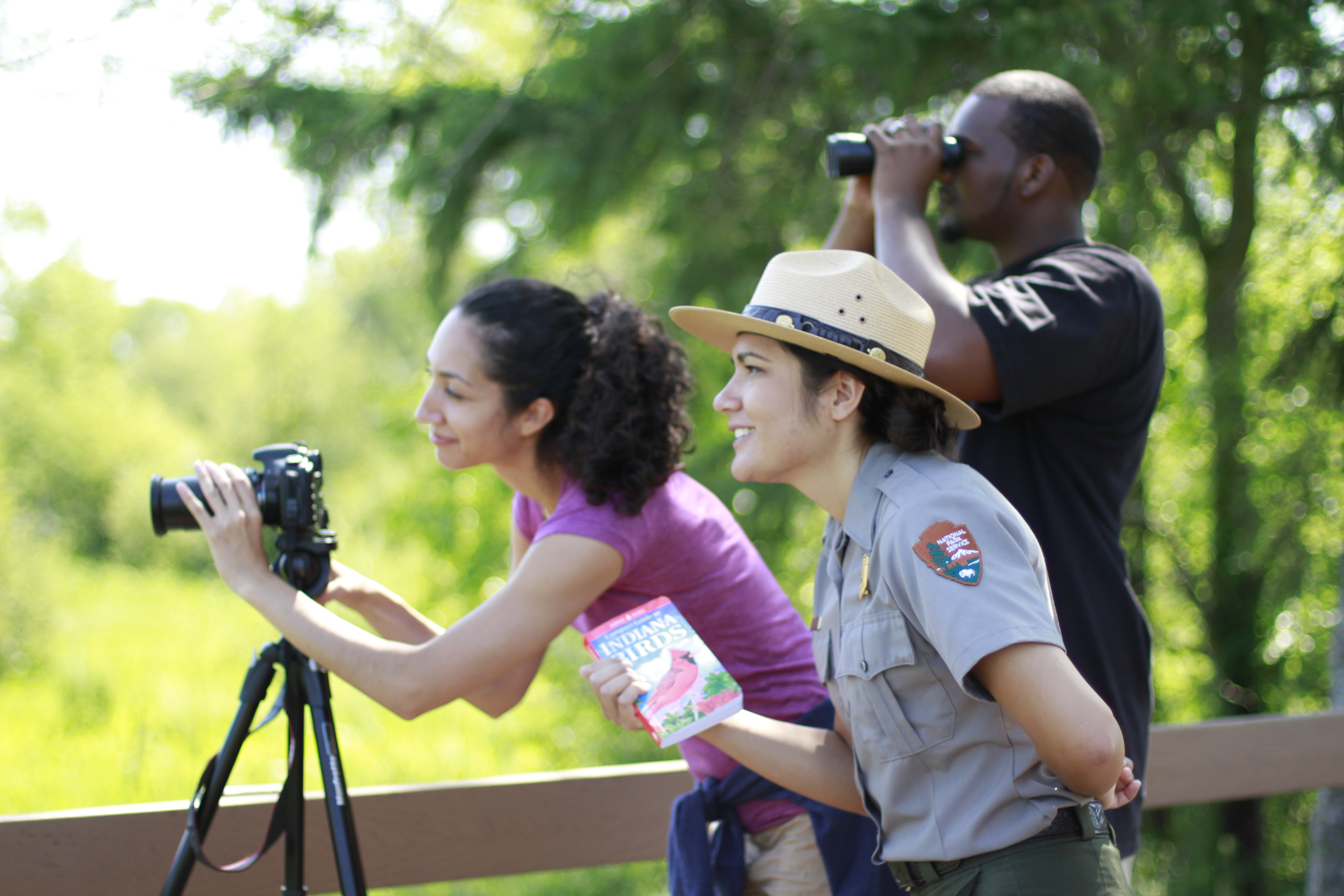
|
| Tours |
Count: 3
A Drive through the ParkSee the park from your car. This tour will take you from the Visitor Center on IN-49 through the eastern portion of the park. You'll see sights of both natural and cultural significance. Century of Progress Homes TourA popular historic site at our national park are the Century of Progress Homes, built for the 1933 Chicago World Fair. There are five houses along this historical district, each demonstrating unique designs and technologies. Sacred Sands Audio TourWelcome – This Sacred Sands Audio Tour has been written by author and playwright David Hoppe, and inspired by J.Ronald Engel’s 1983 book, Sacred Sands: The Struggle for Community in the Indiana Dunes, an audio version of the play has been commissioned by the Indiana Dunes National Park for use along the Portage Riverwalk Trail. Have a seat and enjoy the audio play! Take a look around and observe the contrast and struggles to make and protect this national park. |
| Articles |
|